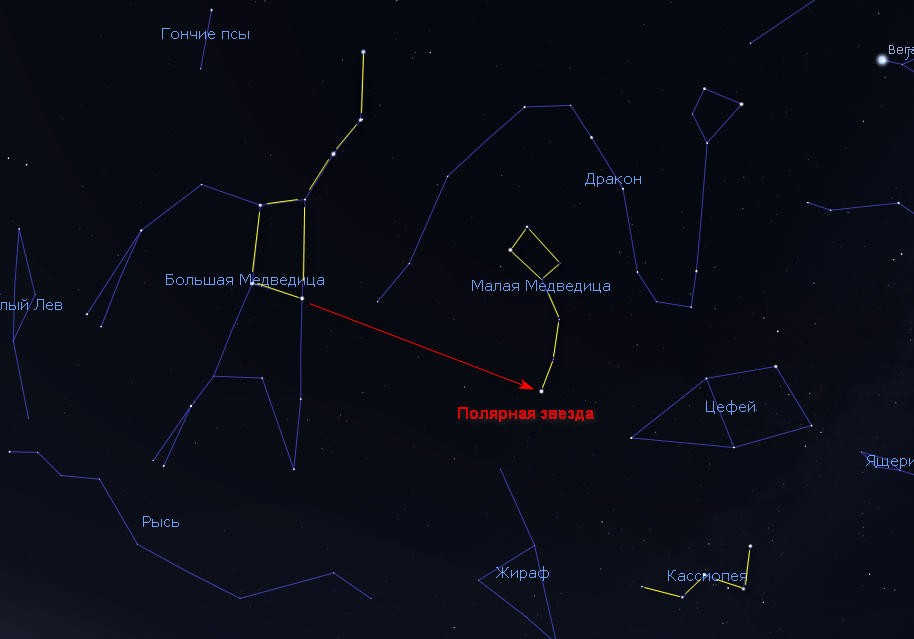The North Star, also known as Polaris, can be found in the constellation of Ursa Minor, specifically in its tail. It serves as a guide to locate the North Pole on Earth. If you look up at the night sky, you can easily spot Polaris by following the Big Dipper constellation, which is much more well-known and prominent.
Knowing how to locate Polaris is a valuable skill, especially for navigation purposes. Once you find it, you can determine the exact direction of the north and, consequently, the other cardinal directions. In the field of astronomy, Polaris is also used to align equatorial mounts, as it remains fixed in the sky while the Earth rotates on its axis.
Polaris is widely renowned as one of the most illustrious stars due to its unique positioning. Educating your children about Polaris and being able to locate it in the night sky can be quite beneficial. While many children may have heard of Polaris, they may not know its exact location, so this information will help broaden their knowledge.
Locating Polaris in the Night Sky
The most straightforward method to find Polaris is by using the Big Dipper. The Big Dipper’s distinct shape can be easily seen in the night sky throughout the year in the northern hemisphere. However, it is important to note that the positions of constellations change as the celestial sphere rotates counterclockwise throughout the year. As a result, the Big Dipper is near the horizon in winter, “on the tail” to the east in spring, nearly at the zenith in late spring, and begins to descend in the west during the summer months.
The Small Dipper, despite its resemblance to a dipper, is not as conspicuous and its stars are not as bright. That is why it is always more convenient to locate the Big Dipper first.
Polaris can be easily found thereafter – simply extend an imaginary line through the two outermost stars of the Big Dipper’s bucket and prolong it. Polaris will be approximately five times the distance of this line.


Discovering the whereabouts of the North Star in the sky is made easier by using the Big Dipper as a guide.
In close proximity lies another prominent constellation, Cassiopeia, which takes the shape of a large letter W. On occasion, this constellation’s captivating form will catch your attention first, making it effortless to locate the Big Dipper.
What Makes Polaris Stand Out
When you first spot Polaris in the night sky, you might feel a bit disappointed. It appears just like any other star among the hundreds or even thousands out there. Many people mistakenly believe that it has a unique appearance, either being brighter or having a different color. However, the truth is that Polaris is quite an ordinary star with a brightness of +1.97m, which only puts it in the 50th place on the list of bright stars.
However, Polaris is famous for an entirely different reason. It is situated near the Earth’s northern pole, which means it almost perfectly points towards the north – with a deviation of less than 1 degree. This unique characteristic has made Polaris invaluable for centuries, as it has helped people navigate their way across land and sea, allowing them to plot their routes with precision.
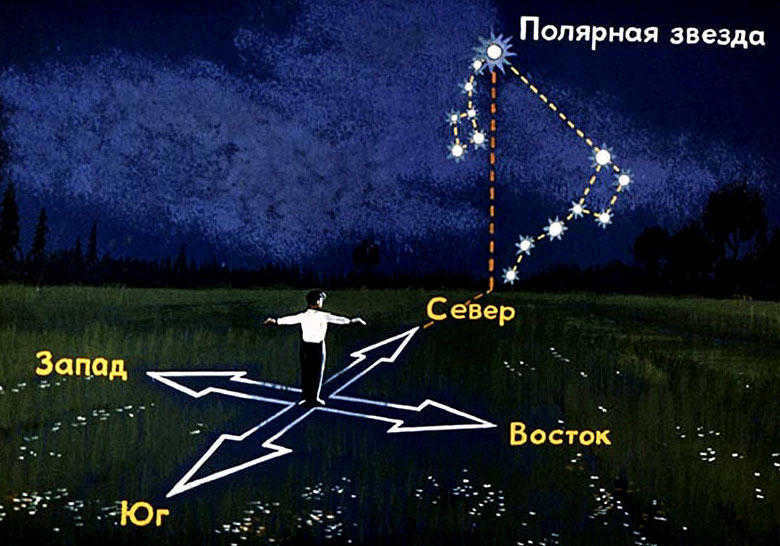
Orienteering with the help of Polaris.
By utilizing this celestial body, you can not only ascertain the precise location of the north, but also determine the latitude of your current position. To achieve this, it is sufficient to measure the angle at which the polar star is positioned above the horizon – this measurement, expressed in degrees, will indicate the latitude of the observation site. For centuries, this method has proven to be extremely useful for navigators and explorers across the globe. As a result, Polaris has earned the nickname “the guiding star” – a symbol of direction and assurance against becoming lost.
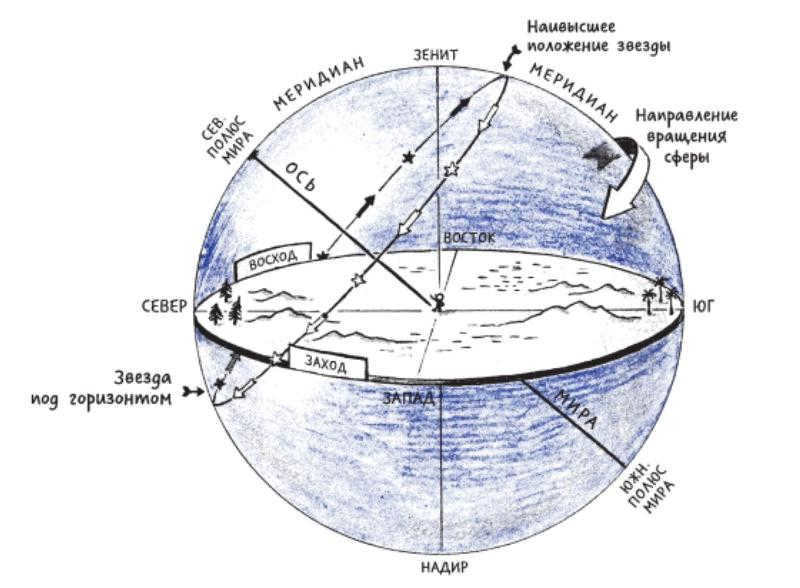
The North Star, also known as Polaris, is situated in close proximity to the North Pole of the Earth.
As the Earth rotates on its axis, the stars appear to move across the sky throughout the day. However, Polaris remains fixed in its position. This is because it is precisely situated along the north-south axis, around which the celestial sphere rotates.

Capturing an image similar to this one is possible when using slow shutter speeds. As the stars move across the sky, they leave behind a visible trace or track. Interestingly, Polaris remains stationary at the center, not exhibiting any movement.
Thus, despite its lack of visual appeal, Polaris holds a special position and carries significant importance. It is worth noting that in the southern hemisphere, there isn’t a single bright star in close proximity to the South Pole. This creates an advantage for those residing in the northern hemisphere, as they have a reliable reference point in the sky.
Is Polaris Always Going to Remain the North Star?
Over time, the Earth’s polar axis undergoes a phenomenon called precession, where it moves in a circular motion with a radius of 23 degrees and shifts by 1.397 degrees every 100 years. As a result, different stars periodically appear in the direction of the North Pole. Currently, Polaris is the closest star to the North Pole, but this hasn’t always been the case and it won’t always be the case in the future.
Even now, Polaris is not exactly aligned with the pole – there is a small deviation, less than one degree. However, by 2102, this deviation will decrease to only 27 angular minutes, marking the closest position of Polaris to the pole. After that, it will gradually start moving away from it.
Image source: Wikipedia
5000 years ago, Tuban was the alpha star of Draco, serving as the polar star. In the future, 12000 years from now, Vega, one of the brightest stars in the sky, will take on the role of the polar star.
The Nature of Polaris
Now that you have learned how to locate Polaris in the sky, you may be curious about the significance of this unassuming yet highly valuable star. In actuality, it is an incredibly fascinating and unique celestial body. If one were to reach Polaris, they would be astounded by the extraordinary events occurring within the Polaris system.
Polaris is an incredible triple system. The primary component is an enormous supergiant, shining 2000 times brighter than our Sun and weighing approximately 6.5 times more. It also has a colossal size, about 50 times that of our Sun! This star, known as Polar A, is relatively young, with an age of only 55-65 million years.
Situated at a distance of 18.5 astronomical units from the supergiant is another star, which is only 1.26 times heavier than our Sun. It completes an orbit around the main star in 30 years. Due to their close proximity, capturing an image of this star pair required the powerful Hubble Space Telescope.
Furthermore, at an even greater distance of 2400 astronomical units from the primary star, there exists another star called Polaris B. It is 1.39 times more massive than our Sun and takes an astonishing 100,000 years to complete an orbit around its parent star. Polaris B can be observed using an amateur telescope.
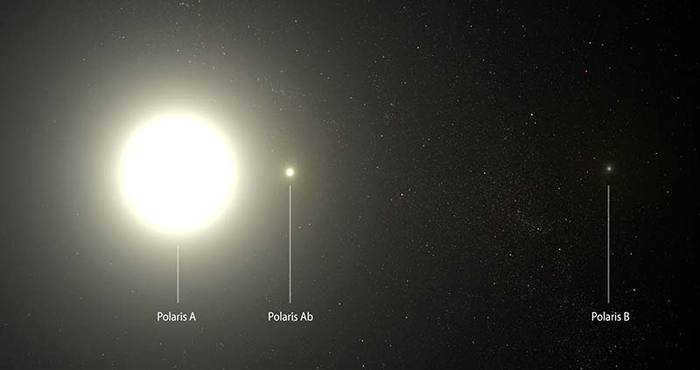
However, that’s not the end of it. Polaris, or more specifically, its primary component, a supergiant star, is classified as a cepheid variable star, meaning it pulsates. However, this particular cepheid is unique, unlike the others – at times, its pulsations diminish and then resume. It undergoes periods of increasing and decreasing brightness over several decades. Additionally, it is the closest cepheid star to our solar system.
Therefore, Polaris is an incredibly peculiar star. It is a triple star system, with all three stars physically connected to each other. Each star in the system is larger than the Sun, and one of them is a pulsating supergiant.
Now you not only know how to locate Polaris in the night sky but also have a better understanding of what it truly is. Make sure to find it and remember all the fascinating information you’ve learned about this remarkable celestial object. And don’t forget to share your knowledge with your children.

Polaris, also known as the North Star, is one of the most renowned stars in the celestial sphere. It is well-known for its distinctive characteristic of always indicating the northern direction. Have you ever wondered about the precise location of Polaris in the night sky?

Polaris is located at the very end of the Ursa Minor constellation. The easiest way to locate Polaris is by using the Big Dipper, which is also part of the same constellation.
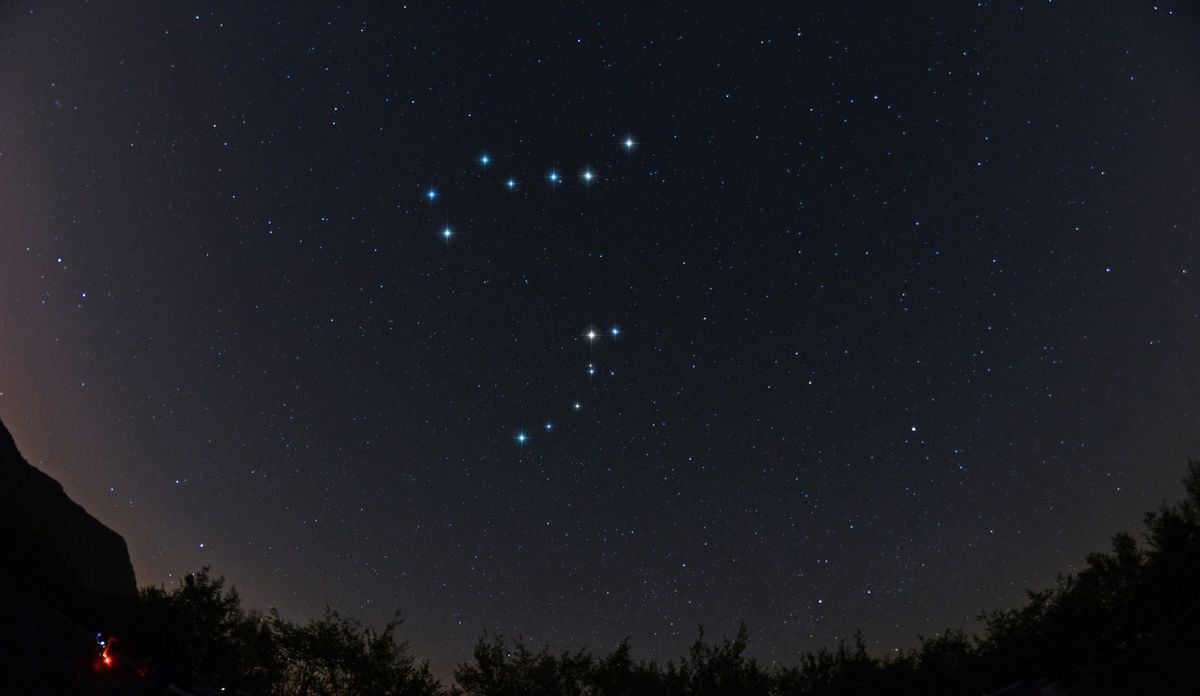
Having knowledge of the star that indicates the north direction and the constellation it belongs to can greatly facilitate your ability to navigate unfamiliar terrain. In the event that you do become lost, you will always have the means to find your way back to the correct path and ultimately return home. With this knowledge, you will have a clear understanding of the cardinal directions.

In this article, you can discover more about locating Polaris in the night sky based on key markers.

Finding the North Star
There are various methods to locate the North Star. One can rely on a single reference point or look to other constellations. However, a basic understanding of astronomy is necessary for this.

It has been observed that these techniques carry a certain level of risk. Initially, it is necessary to determine the whereabouts of the polar star. The most crucial aspect is to avoid any confusion with other constellations. Otherwise, there is a high possibility of losing one’s bearings, which can be extremely hazardous for individuals who find themselves in unfamiliar territory.
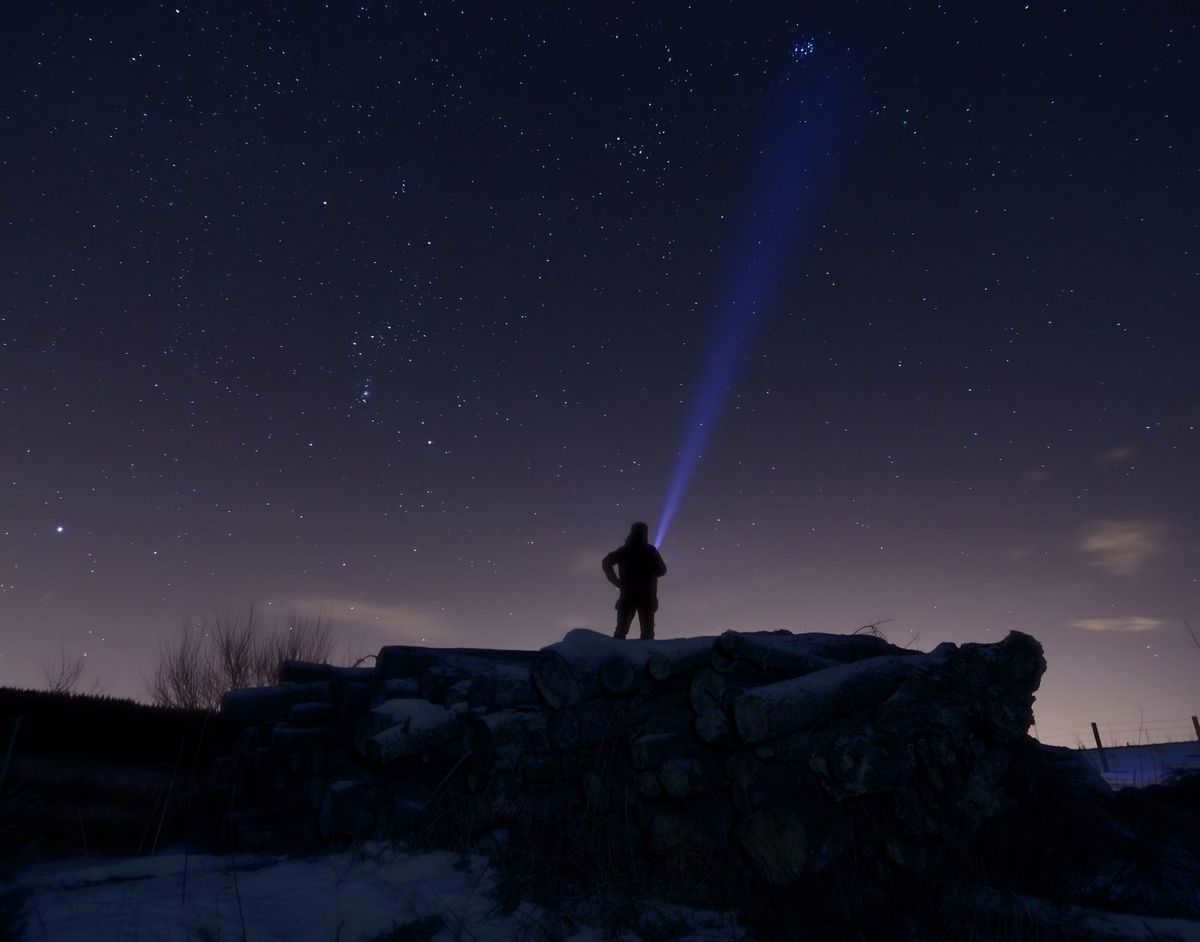
In order to prevent such situations, it is advised to consult the Polar Star. Professionals in the field of landmarks assert that it will consistently guide you towards the correct path.
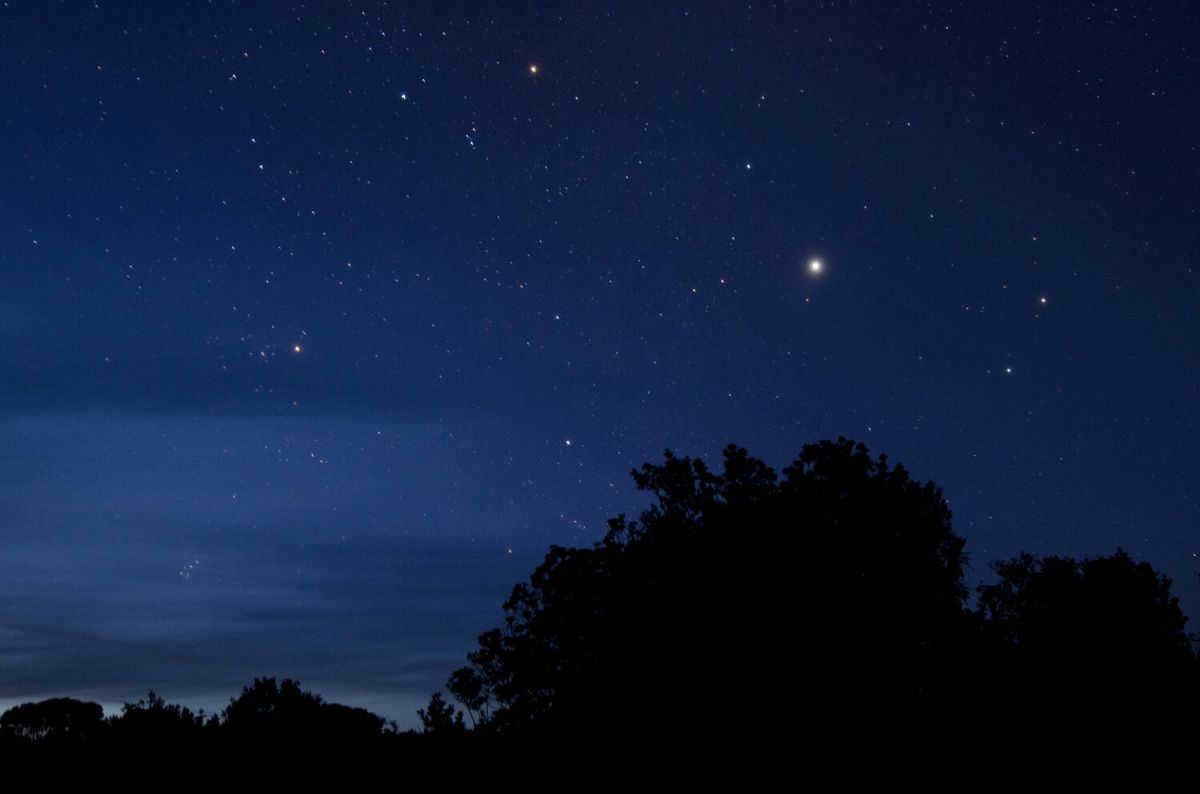
If you’re looking for the precise stellar entity, there’s no need for a map or compass. In fact, you can easily spot it by the luminous glow concentrated at the tip of the Ursa Minor constellation.
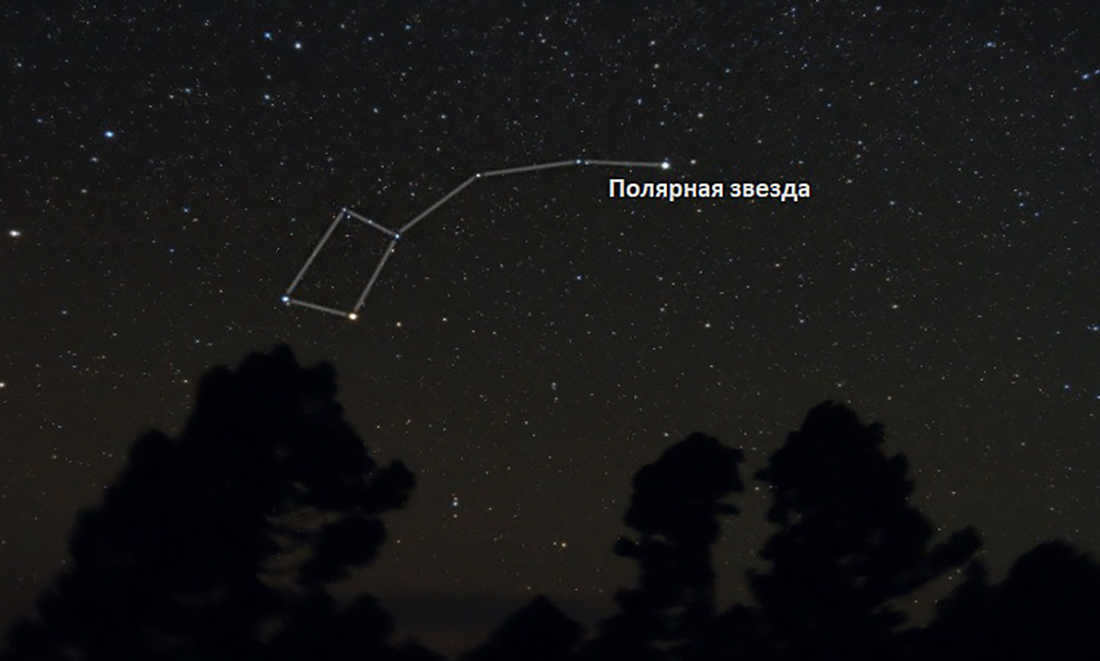
It is important to mention that the constellations are in a perpetual motion across the celestial sphere. Nevertheless, Polaris stands out as an exception to this rule, as it remains fixed and occupies a central position.

Description
If you are in search of Polaris to locate a notable point, it is essential to familiarize yourself with its distinctive characteristics. As previously stated, it is renowned for being the most luminous celestial body in the nocturnal expanse.
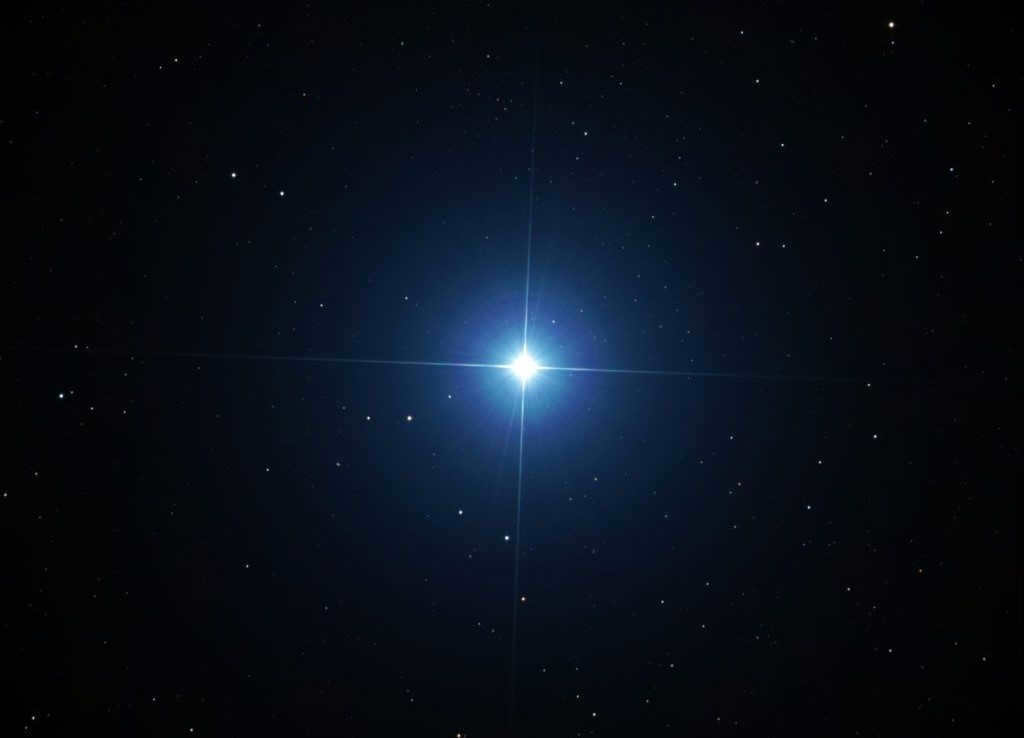
Nevertheless, individuals lacking knowledge may mistakenly identify it as a different celestial body.

First and foremost, take a close look at the nocturnal heavens. If you observe it attentively for a duration of 5-10 minutes, you will discern that all the celestial bodies are in motion at a slight velocity.

The reason for this phenomenon is the planet’s rotation on its axis.

The North Star, also known as Polaris, is constantly aligned with the northern direction.
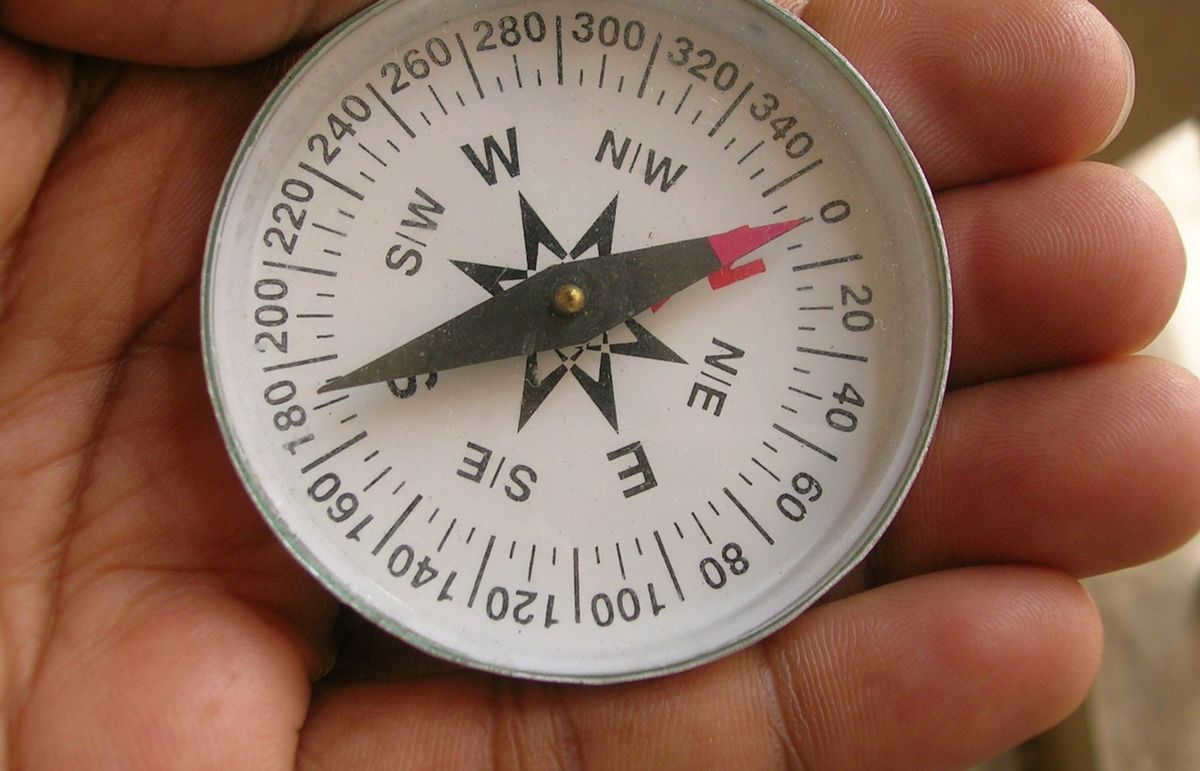
Discovering the right orientation necessitates a few easy procedures. Locate the polar star in the celestial sphere. Next, envision a vertical line extending upwards from the horizon. The point where these two lines intersect indicates the direction north.
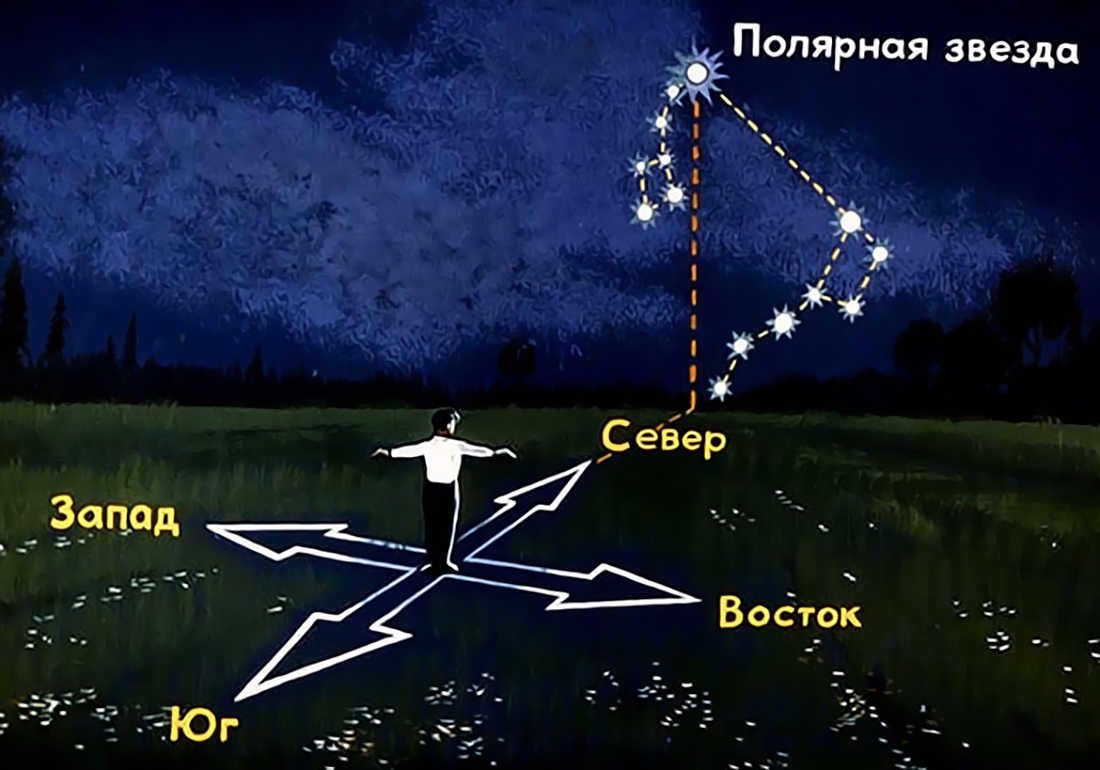
If you go in the opposite direction, you will head south. The right side will be where east is located, while the left side will indicate west.
Searching for the North Star Using the Big Dipper
If you’re looking to find Polaris, the North Star, the simplest method is to locate the constellation known as the Big Dipper.
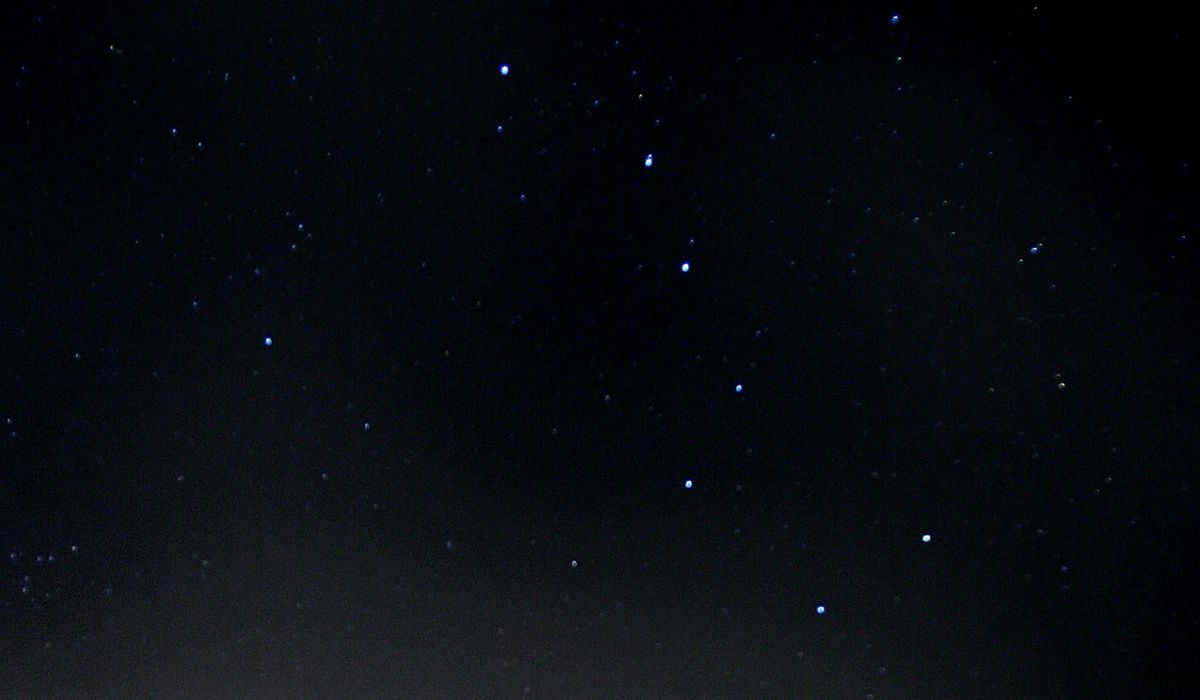
There are numerous celestial bodies in the firmament that appear more prominent than others. If you venture outside the urban area, devoid of any artificial illumination, the stars will shine even more brilliantly.
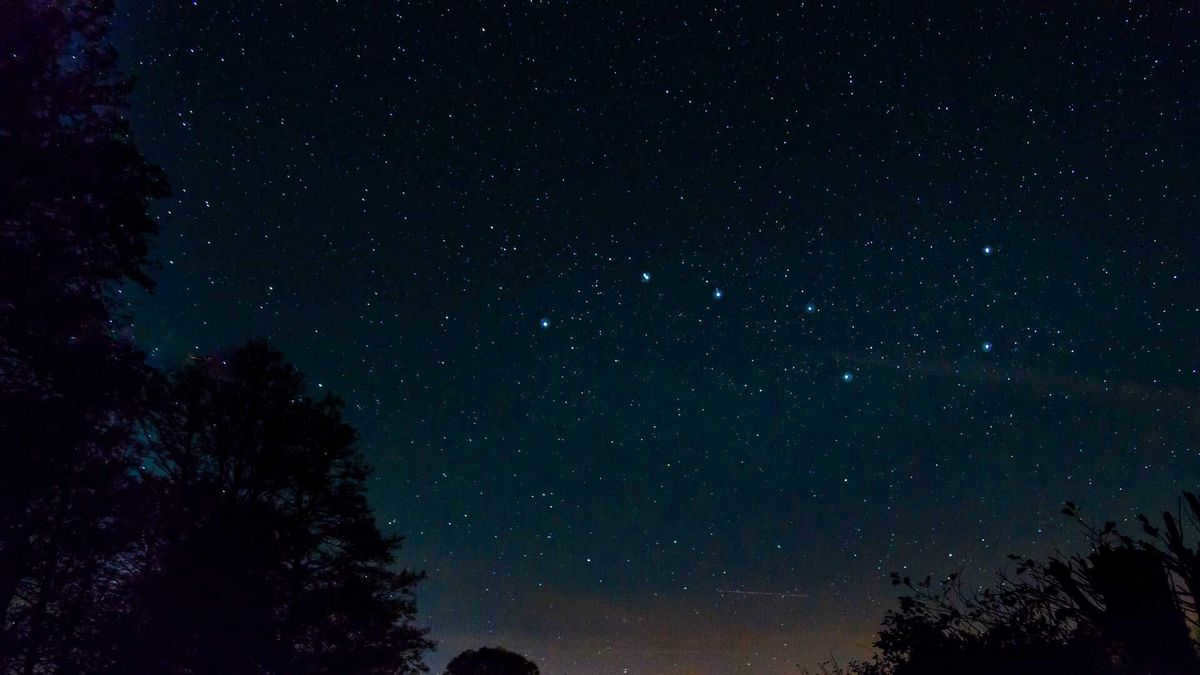
Locating the Big Bear is a simple task. Even those new to the world of astronomy can accomplish it. The constellation is visible in the night sky all year round, and stands out due to its distinct and unforgettable formation.
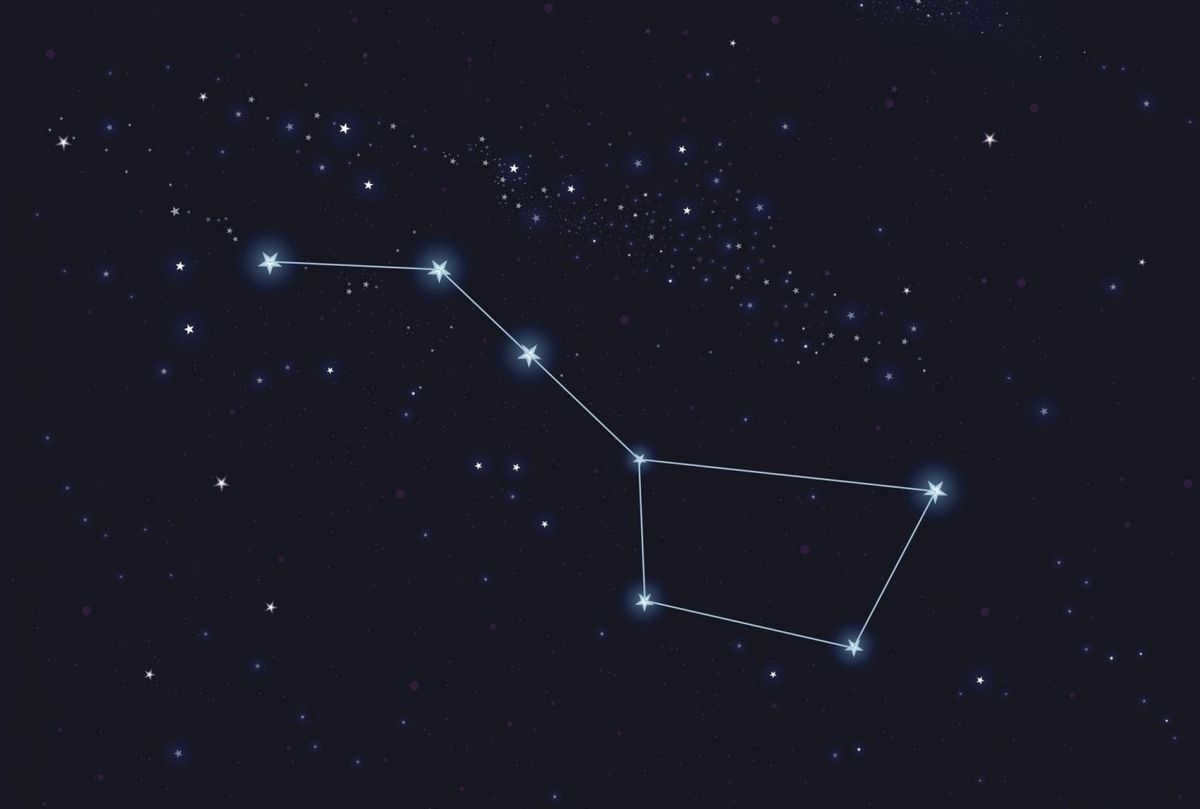
From a visual standpoint, one might perceive the constellation as comprising of 7 dots. In reality, it is challenging to determine their exact quantity. Nevertheless, individuals are able to observe only a portion of these dots, which collectively form the outline of a bucket.
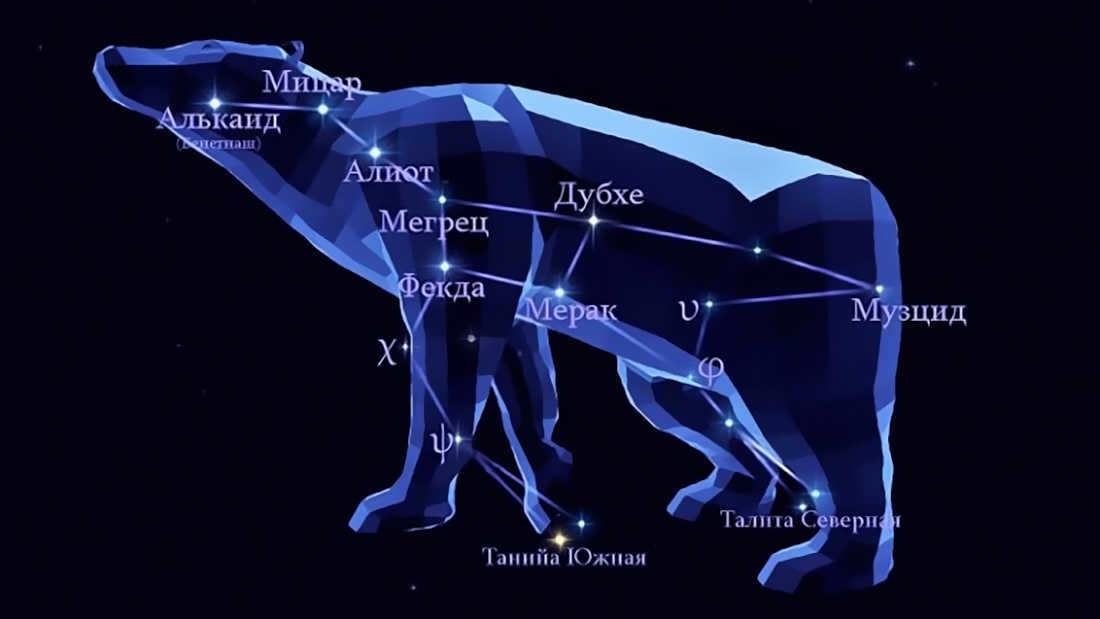
In order to locate the Polar Star, one needs to locate the two furthest points of the Ursa Major constellation. Once these points are identified, a horizontal line can be drawn connecting them. The brightest point along this line will be the Polar Star, and it can be easily seen with the naked eye due to its distinct radiance that sets it apart from other celestial bodies.
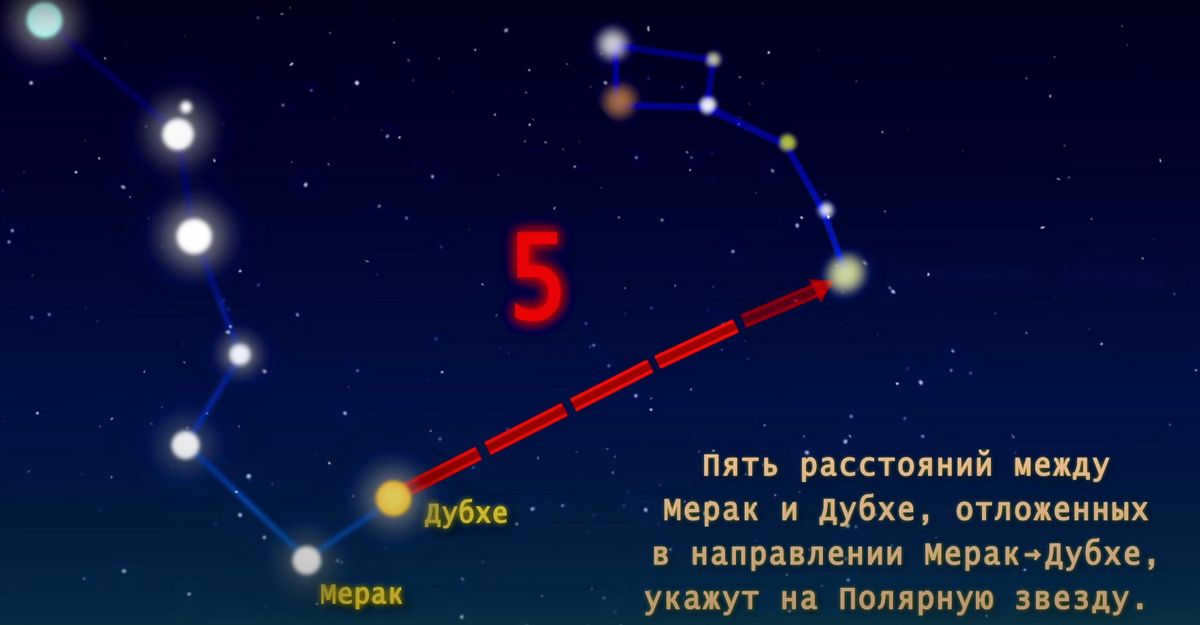
The correct position can be found in the constellation Ursa Minor, which also resembles a small ladle. It appears to be flipped compared to the constellation Ursa Major. Polaris, also known as the North Star, will be situated at the end of this ladle.
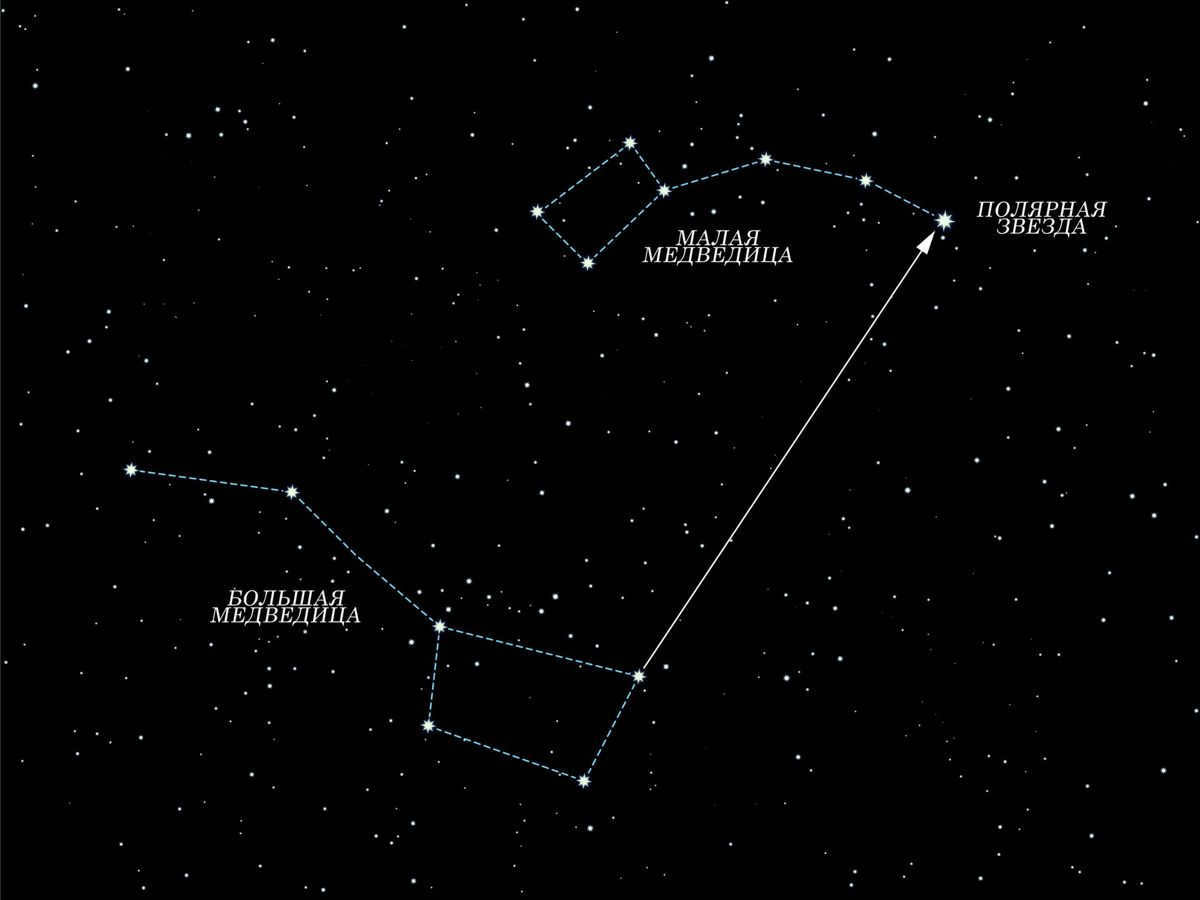
It is worth mentioning that the position of constellations can vary depending on the season.
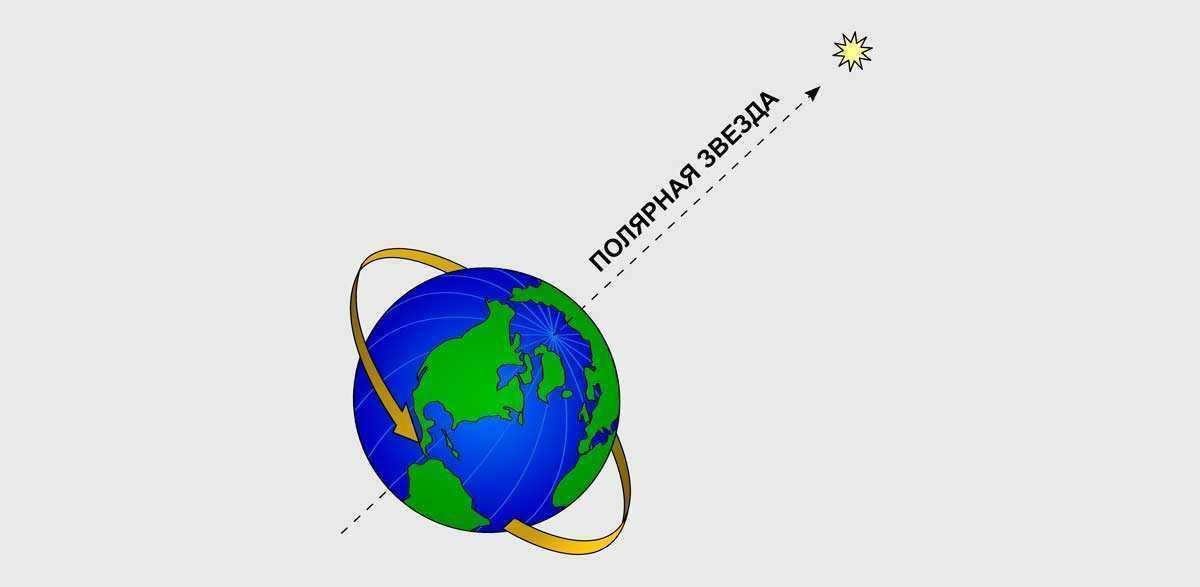
Throughout the winter months, the sizable ladle is “secured” by its handle and shifts towards the eastern direction. When spring arrives, it conceals itself right at the top point in the sky. As summer approaches, it becomes noticeable right at the center of the nocturnal firmament.
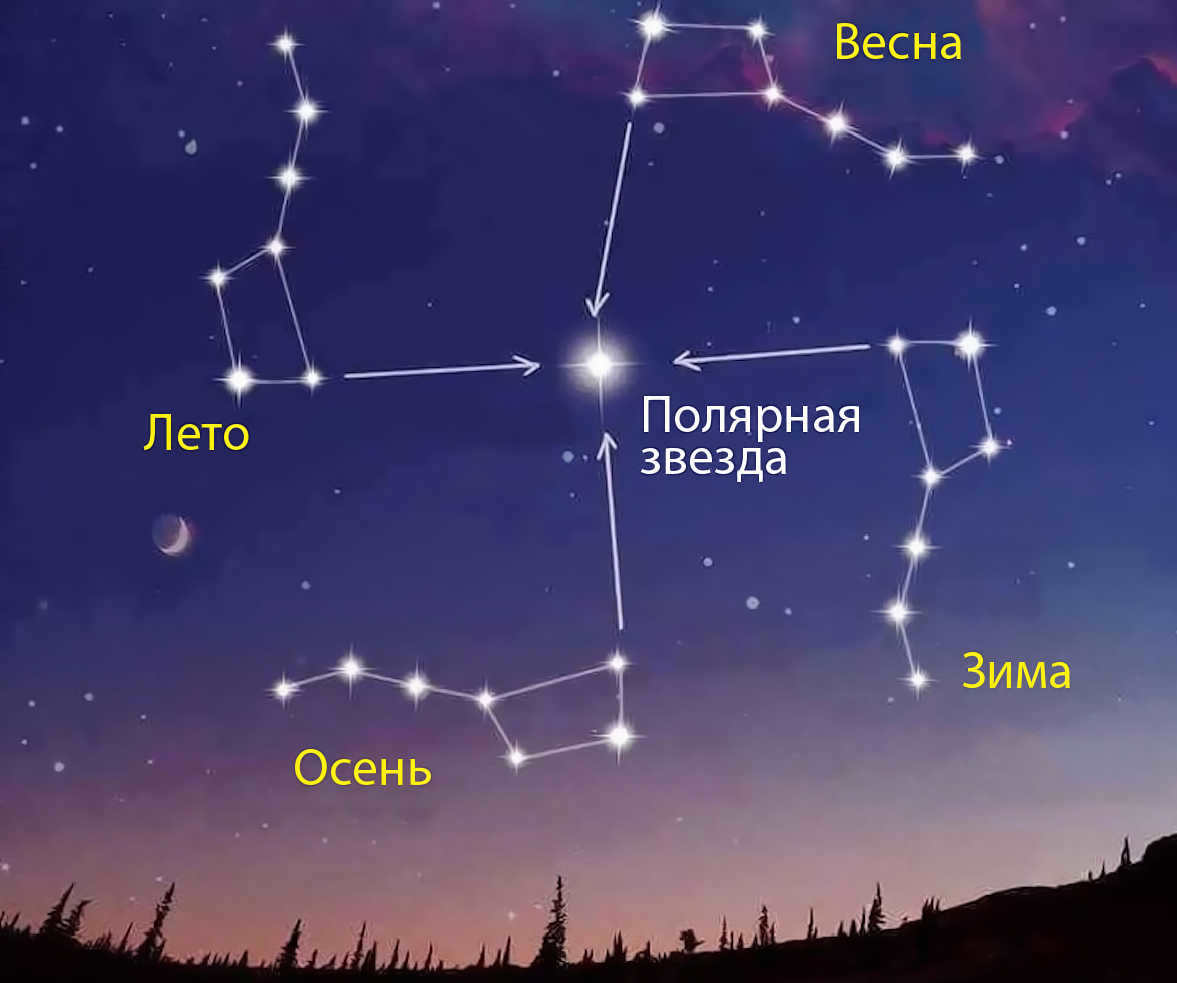
That’s the reason why novice stargazers encounter some challenges in locating the primary constellation of Polaris at the onset of the summer season.
Discovering the correct point using a compass and map
Even though a small number of individuals currently utilize physical maps and traditional compasses, these tools can be quite useful when attempting to locate the North Star.

If you find yourself in a desperate situation, you can always rely on your mobile phone as a backup option. The device comes preloaded with all the essential applications you might need.

Visibility in the night sky is not always optimal due to various factors such as trees, clouds, or mountains obscuring the horizon.

If locating the North Star is of utmost significance in determining your course, employ the aid of a map or compass.

The instrument features a unique magnetic arrow that aligns with the position of Polaris.

Nevertheless, it is necessary to make a minor adjustment for the magnetic pole. Be ready to experience a slight distortion in the magnetic field lines.
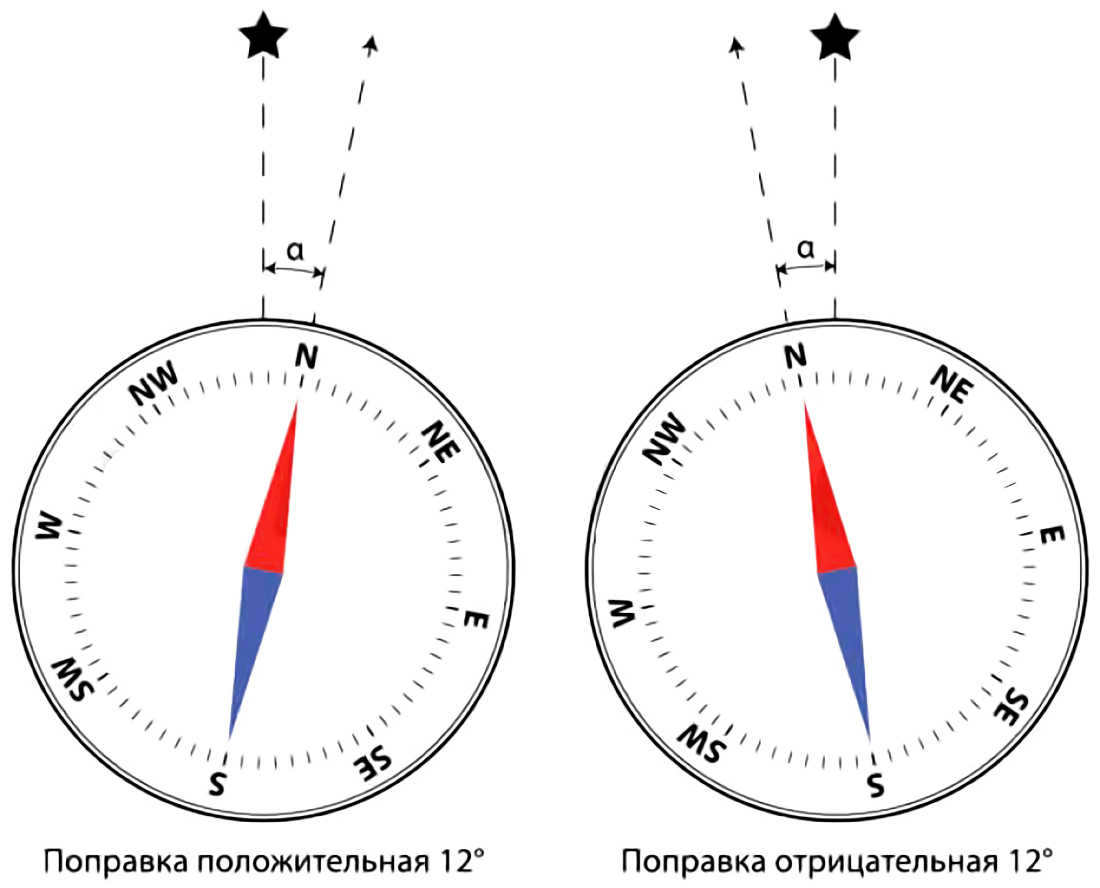
The phenomenon of the area’s magnetic declination is known as “magnetic declination of the region”. This data can be found in astronomical reference books.
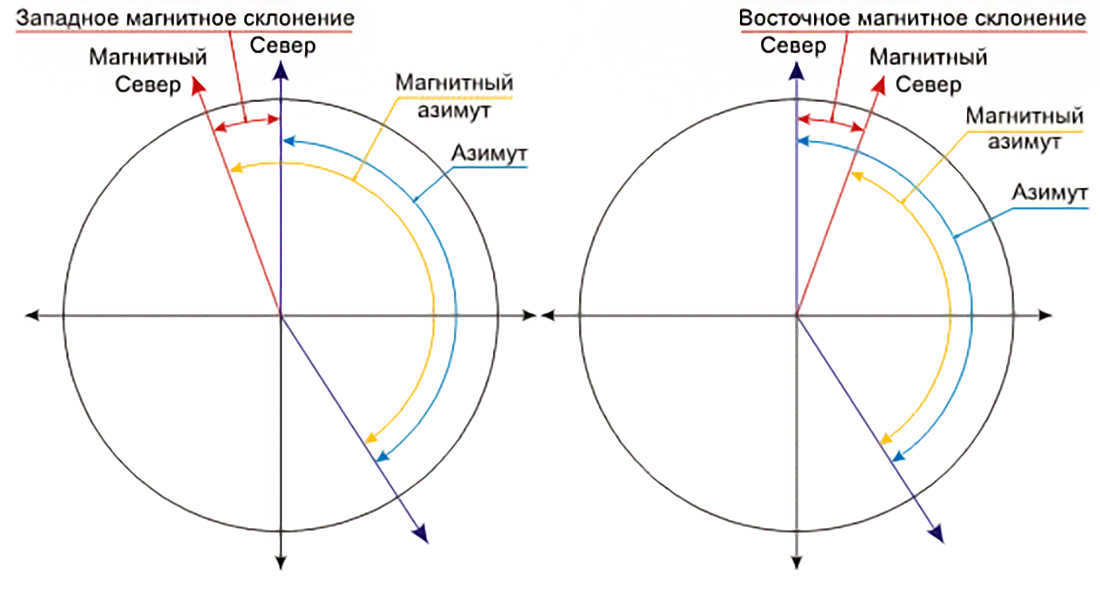
In order to find the Polaris star using a compass, you should follow these steps:
- Determine the north direction using the compass, considering the magnetic declination. If the declination is to the west and has a value of 15 degrees, you should move the compass arrow’s northern tip to the left by the same amount. This is the direction you need to look for Polaris.

- When taking measurements, it is important to select an appropriate location. It is recommended to avoid areas near high voltage lines, cars, and railroads, as these can introduce significant distortions to the data.

- To ensure precise positioning, determine the star’s elevation. This value is measured in degrees and typically corresponds to the width of the landscape. By utilizing this technique, you can ascertain the exact coordinates needed to approximate the star’s location.

The methods mentioned above can be classified as radical. These methods allow us to ascertain the whereabouts of Polaris. Nonetheless, the precision of the direction cannot be guaranteed.

Once you have identified the route with the help of a compass, utilize the map to navigate towards your intended destination.

Using Cassiopeia to Locate the Perfect Spot
One simple method for locating the North Star is to use the constellation Ursa Major, also known as the Great Bear.
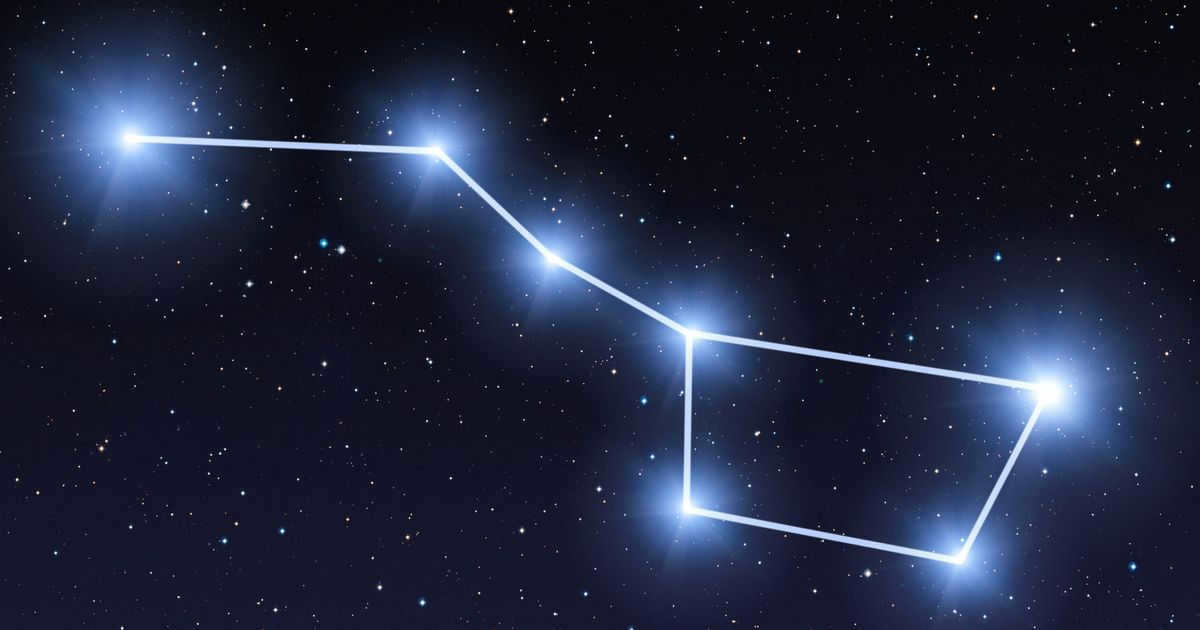
By gaining a thorough understanding of astronomy, you will also be able to rely on other star formations.
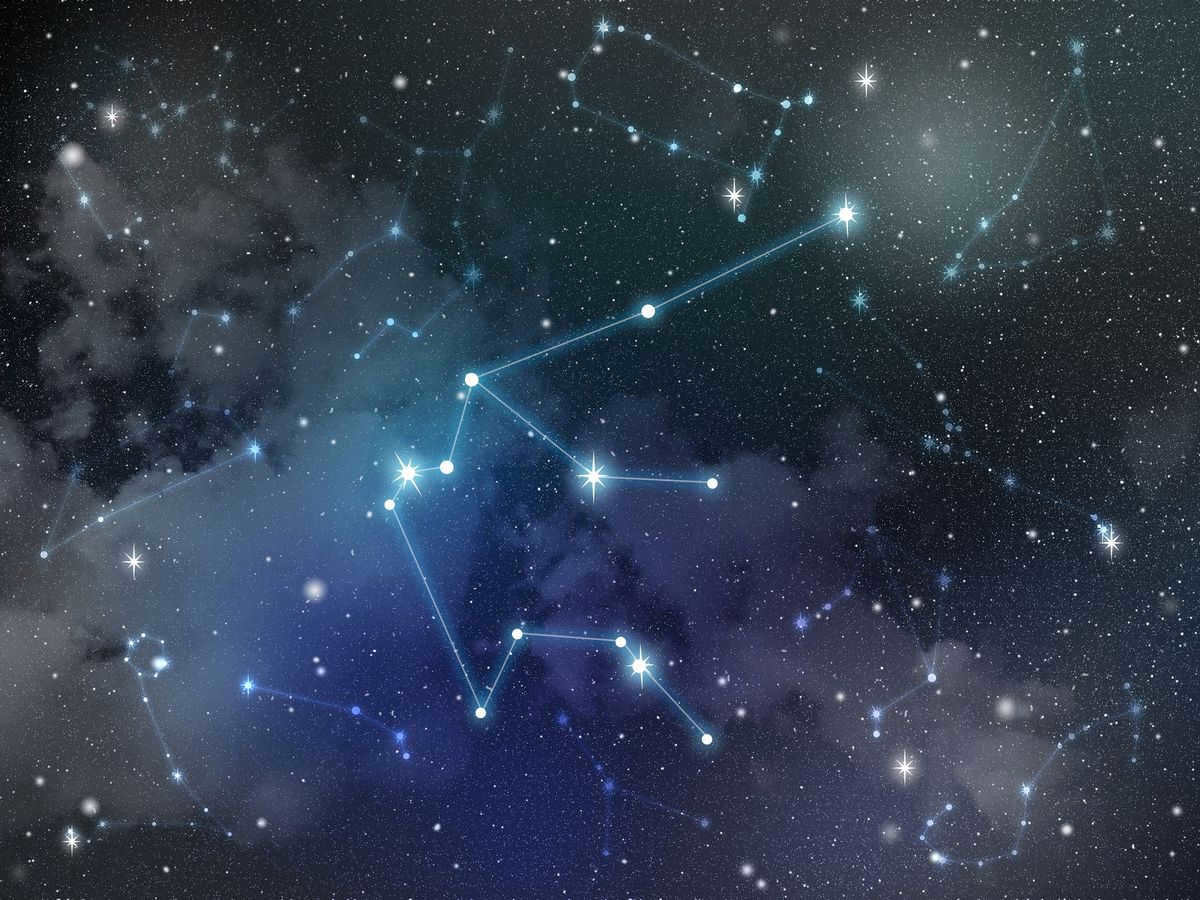
An ideal choice would be the constellation Cassiopeia, which can be located on the opposite side of Ursa Major.
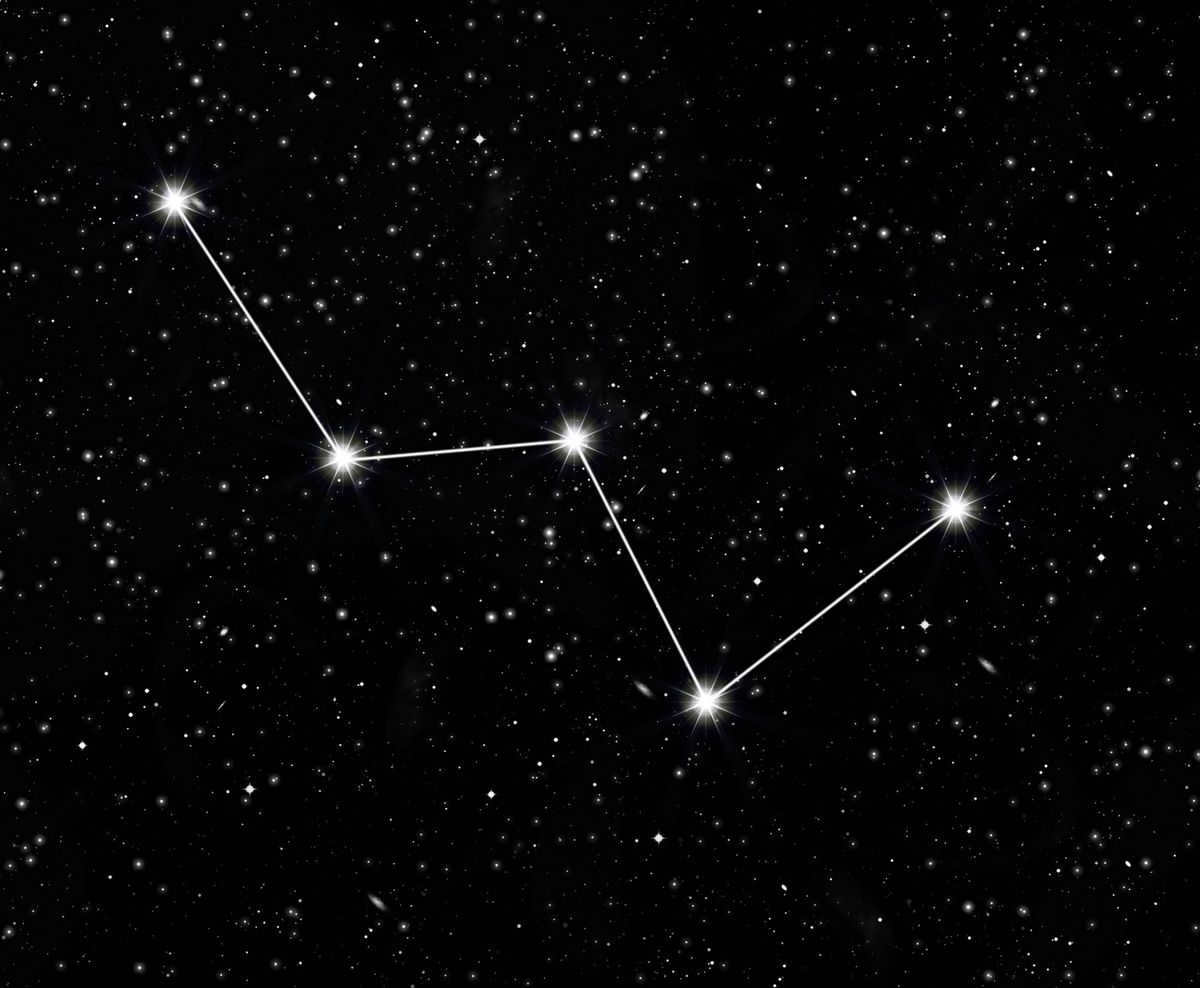
Visually, one can observe that Polaris is situated in the middle of the Big Dipper and Cassiopeia.
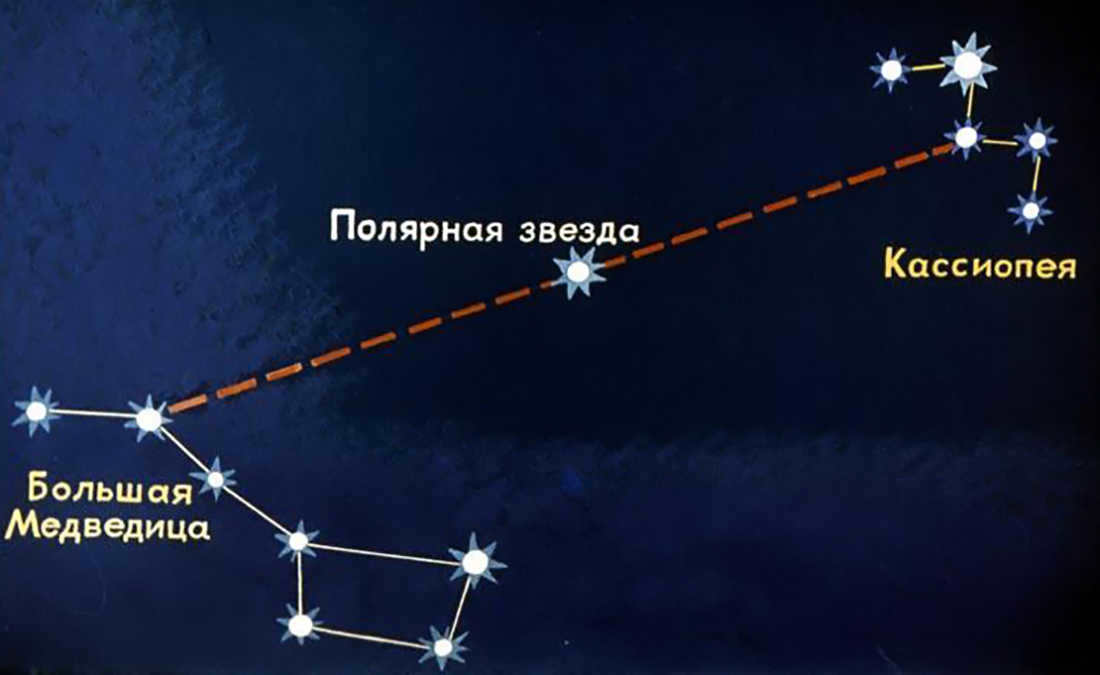
This makes the search much easier. It is advisable to adhere to the following sequence of steps:
- Connect the two endpoints of the bear with a straight line.
- Apply the same method to the stars on the opposite side of the constellation.
- From the point where the lines intersect, draw a line through the center of Cassiopeia. It is in this direction that you should look, and you will be able to locate Polaris.
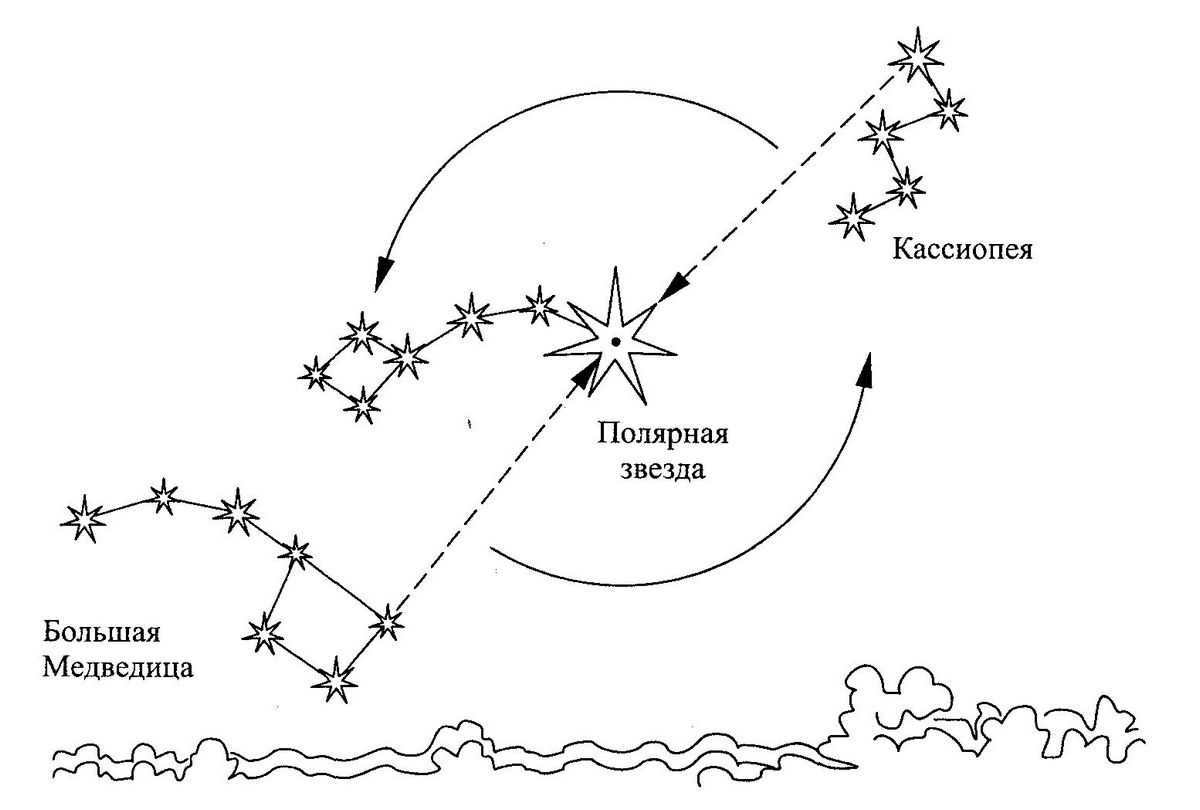
Finding the North Star is not a challenge if you have good vision. It is crucial to consider the geographical coordinates of your location.

During the summer months, when near the equator, the Medveditsa is situated just beyond the horizon. As a result, it can be quite challenging for an individual to catch a glimpse of it.

Simultaneously, locating Cassiopeia and Polaris is not a challenging task, as they are easily observable in the celestial sphere.
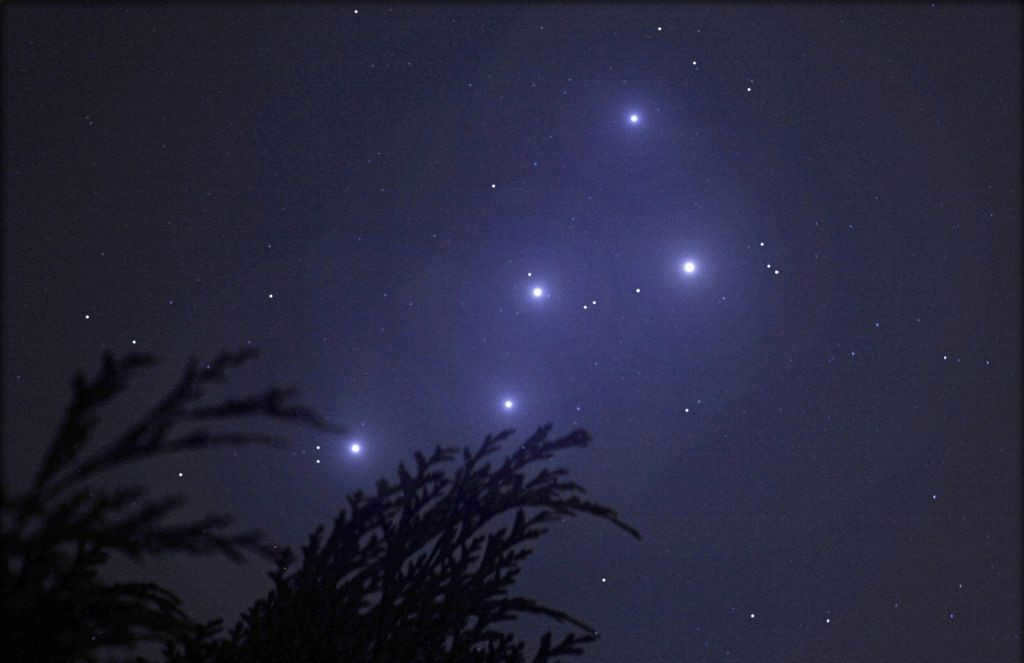
Looking for the Swan constellation
This method of searching is both simple and challenging. The challenge comes from the fact that beginners may find it quite difficult to locate the Swan constellation in the night sky.
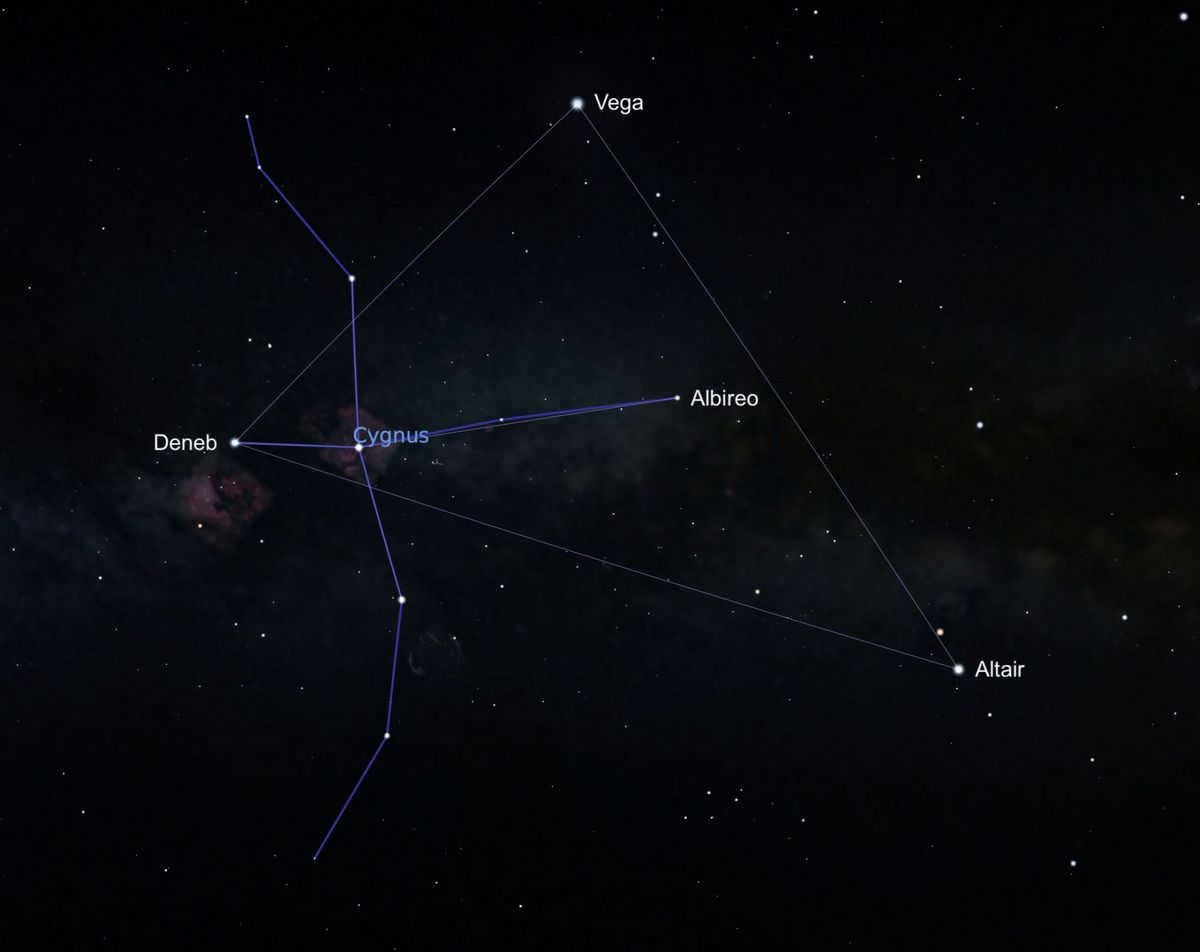
If you are aware of the precise whereabouts, locating the path to the North will not pose any challenges. Even if the sky is partially obscured by clouds.

In order to locate the Polaris star, you must first locate two reference points, Hyena and Deneba. Connect these two points with a straight line. Starting from Deneba, draw a line that is twice the length of the distance between the two reference points. The desired celestial body will be located at the endpoint of this line.
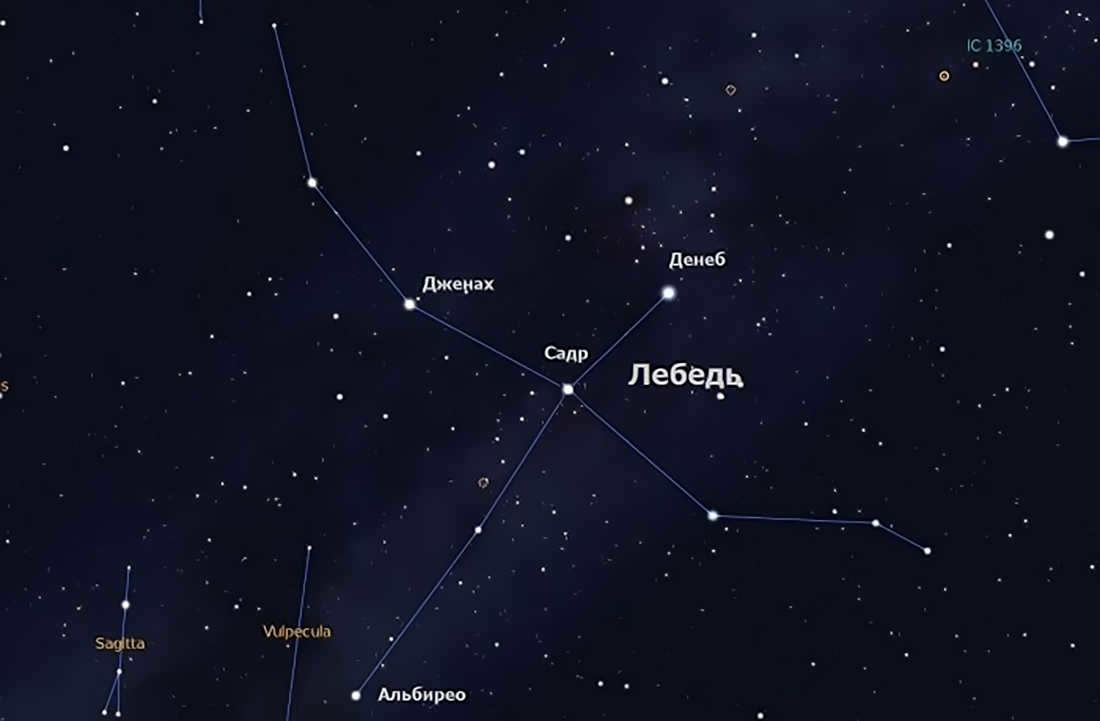
Locating Polaris with Orion
Orion is a widely recognized constellation that can help you find Polaris, also known as the North Star.
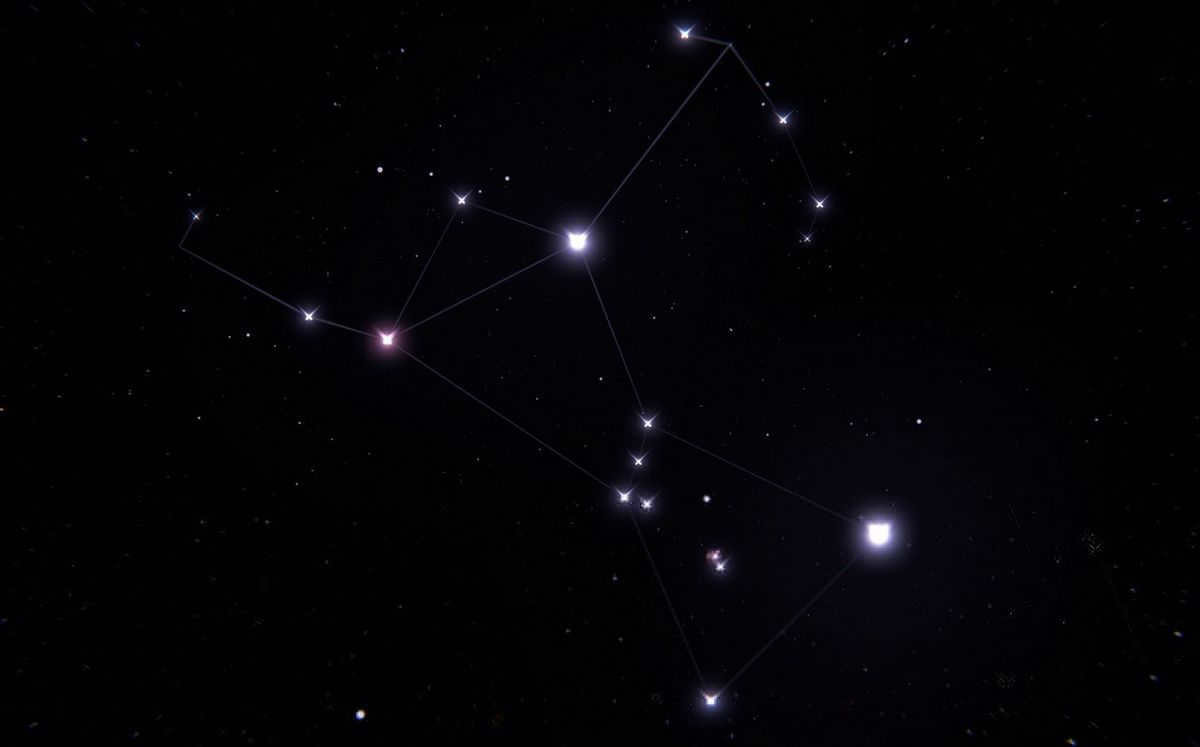
If you follow it, you can locate Polaris. Nevertheless, you must exert yourself and acquire specific abilities.
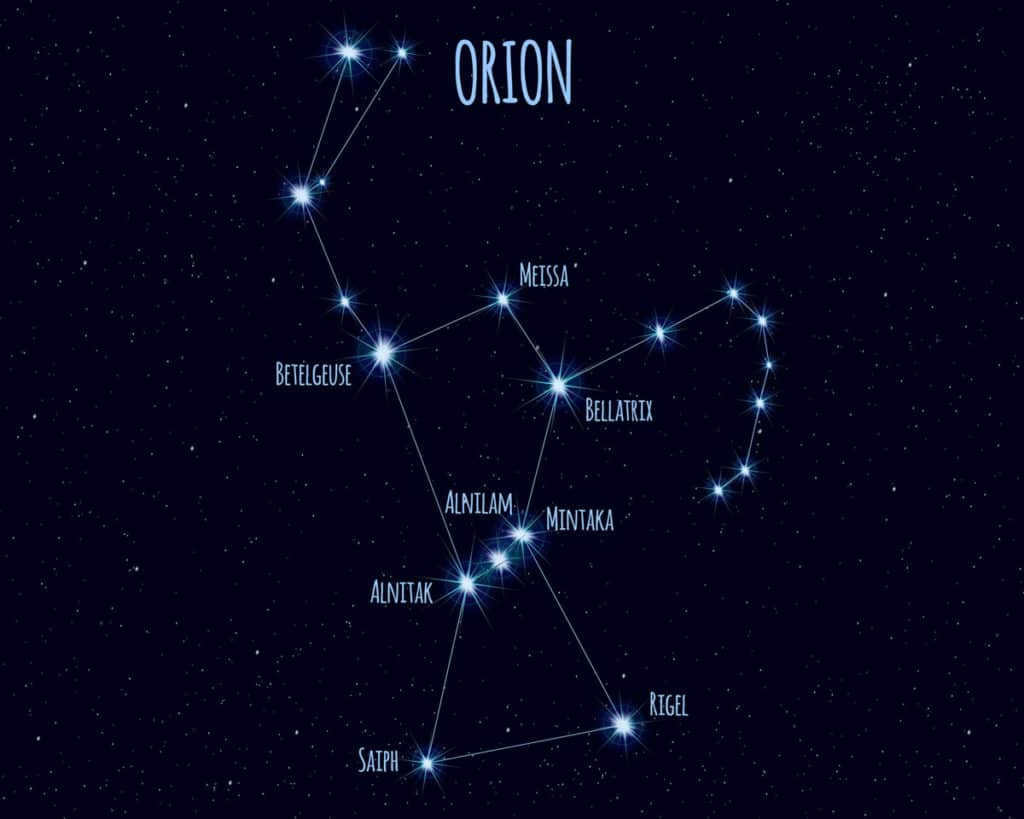
If the sky is partially obscured by clouds and there are various weather challenges, this approach is appropriate for locating the polar star.

To start off, it is essential to locate not just the belt of Orion, but also its farthest point known as Capella.
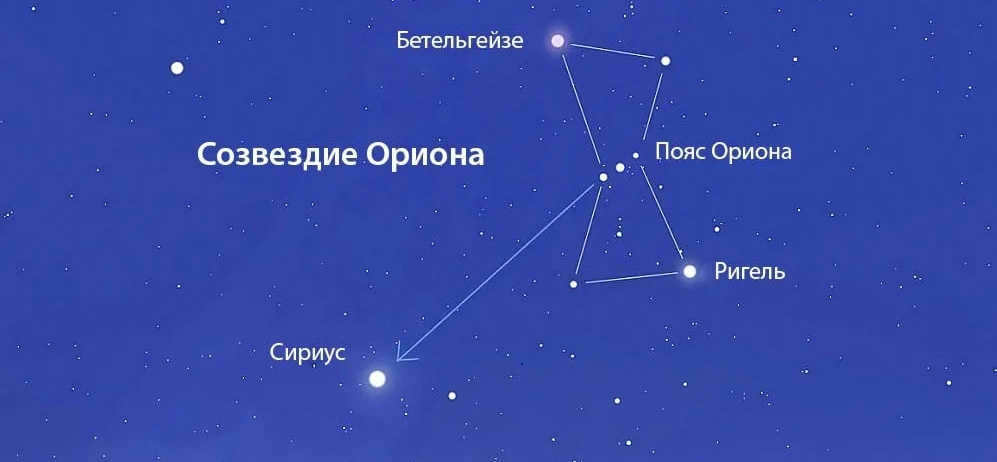
Create a visual mark that runs directly down the middle of the belt. This line must intersect with the star Meissou. Next, extend the length of the line until it reaches Capella and continues beyond. Finally, position Polaris at the very end of the line.
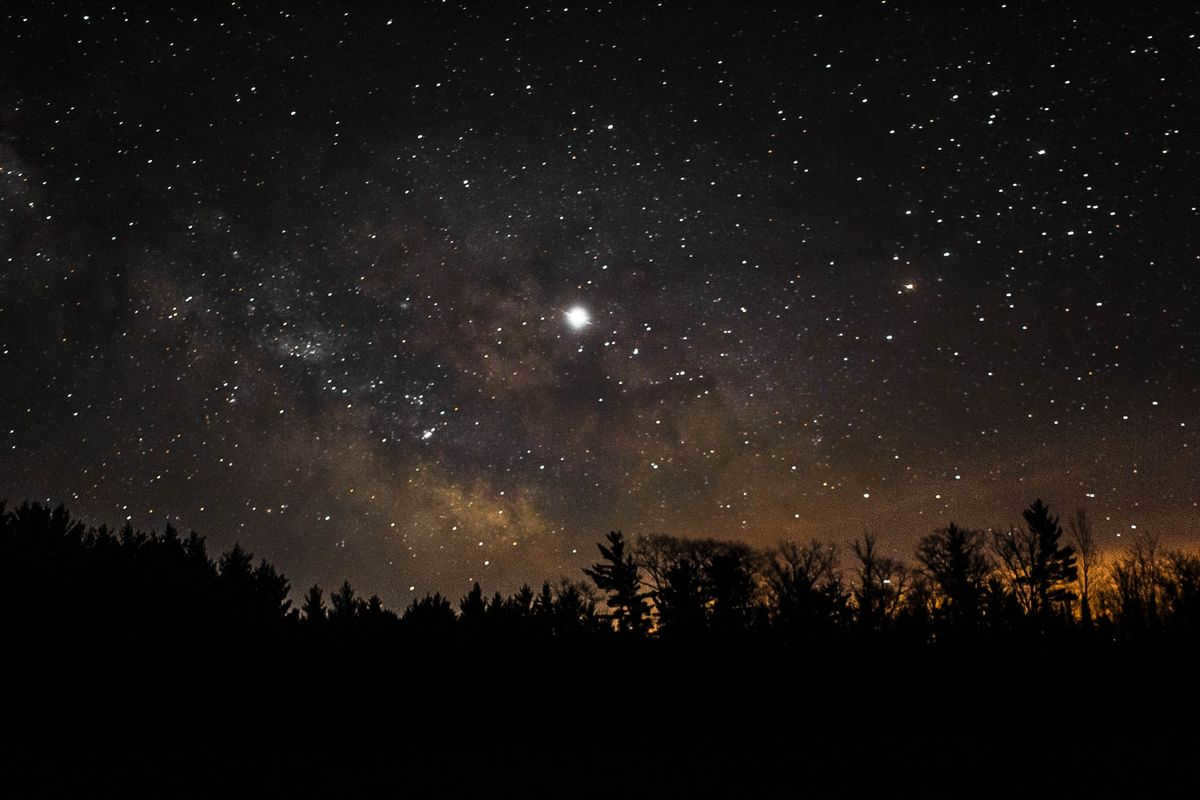
If you’re searching for a route in the colder months (autumn and winter), this approach will be applicable.

In this timeframe, the positions of Orion and Polaris are sufficiently far apart, making it easy to locate the northern direction.

Furthermore, the formation of Orion’s belt is exclusive to the winter season in the northern hemisphere.
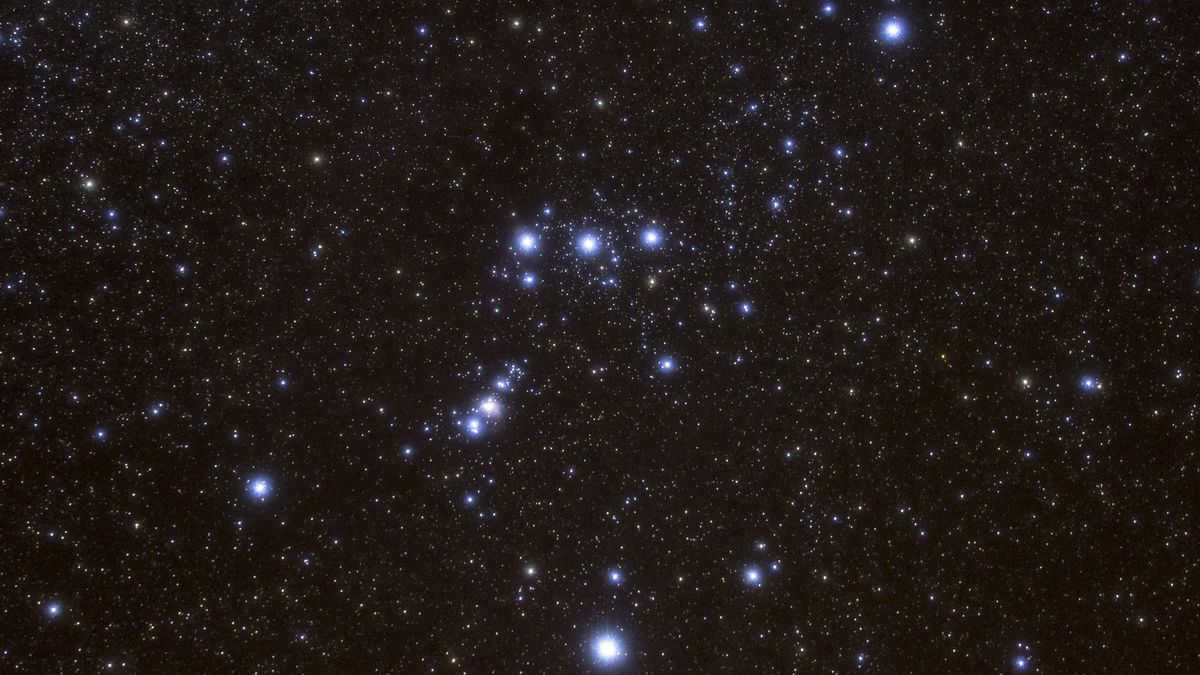
Knowing the location and method to locate the North Star is beneficial. The selection will be based on your level of expertise in the field of astronomy.

If you are new to this, opt for uncomplicated choices.
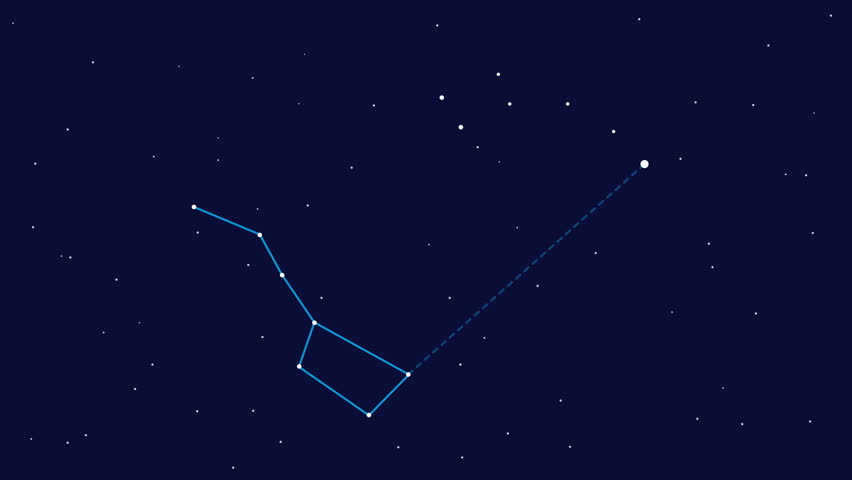
Experienced stargazers will have the capacity to utilize more intricate techniques.

While other constellations are constantly rotating and changing their location, Polaris remains fixed in its position, serving as a reliable point of reference.
Located near the North Pole of the world, Polaris appears closer to the horizon for observers located further south.

Knowing how to correctly locate this brilliant celestial body can always enable you to determine your way back home, even if you happen to become disoriented in a forest during nighttime.
Where can Polaris be found? This inquiry is likely one of the most frequently asked questions among novices. Indeed, for those who are new to stargazing, Polaris assumes a significant role as a reference point for celestial navigation. Let’s explore together the methods for locating Polaris in the night sky!
The most convenient method of locating Polaris is through the handle of the Big Dipper, alternatively known as the Big Bucket. This particular arrangement of stars is likely recognizable to anyone who has ever glanced up at the night sky, so I won’t go into detail about it again. Instead, I’ll simply explain how to locate it in the evening sky.
The Big Dipper is visible throughout the year, although its position in the sky varies depending on the season. The easiest time to spot this constellation is during autumn and the first half of winter, when the dipper can be seen in the northern part of the sky at a relatively low altitude above the horizon. During this time of year, the dipper appears in a horizontal orientation, making it easily noticeable in the night sky.
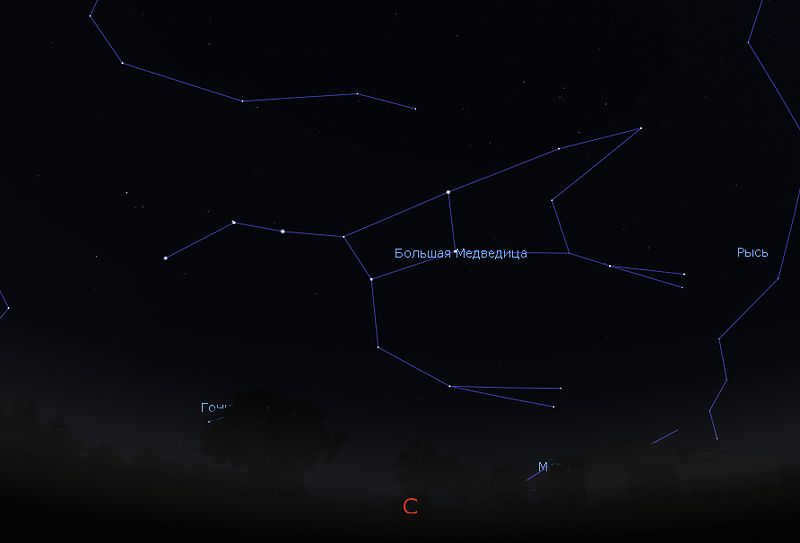
During autumn evenings, locating the Big Dipper in the northern part of the sky is a simple task. Image: Stellarium
By the end of winter, the ladle suddenly moves upward, resembling a handle, and ascends into the sky. In the process, it also shifts towards the east. During spring, the dipper can be observed almost directly above. This is why during late spring and early summer, it can often be challenging for beginners to locate it, as it is positioned right above their heads!
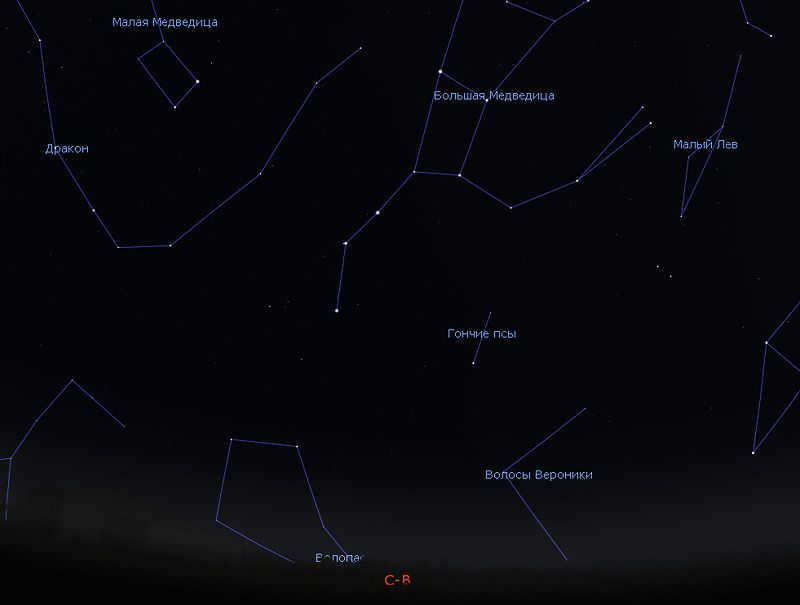
The Big Dipper can be found in different positions in the sky depending on the season. During the second half of winter, it can be seen upright in the northeast. This can be observed using Stellarium software.
In the summer, the Big Dipper gradually moves towards the horizon and appears tilted, as if descending a hill. During this time, it can be seen in the southwest and west directions.
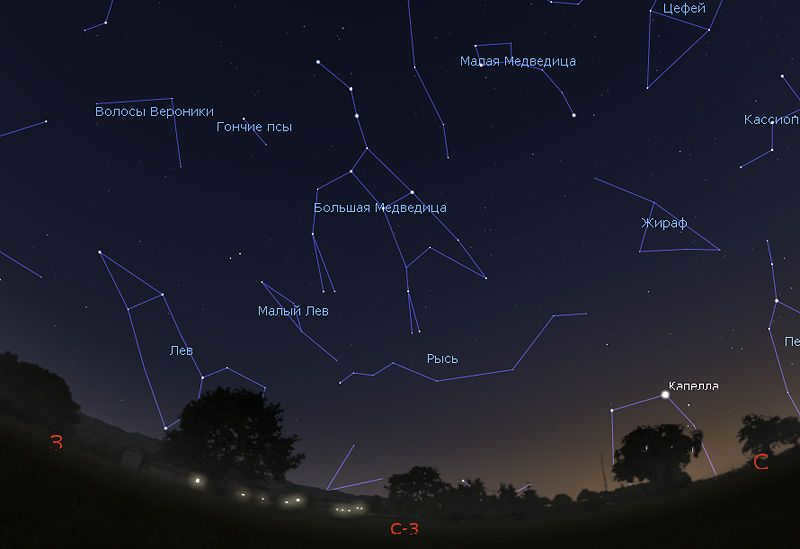
The Big Dipper in the summer sky. Image: Stellarium
Step #2. Locating Polaris
So, we have identified the main landmark in the sky of the Earth’s northern hemisphere. Now let’s locate Polaris.
To do this, we need to take the two outermost stars of the Big Dipper – their names are Merak and Dubhe – and connect them with a line. Have you done that? Now mentally extend this line beyond the star Dubhe, by five times the distance between Merak and Dubhe.
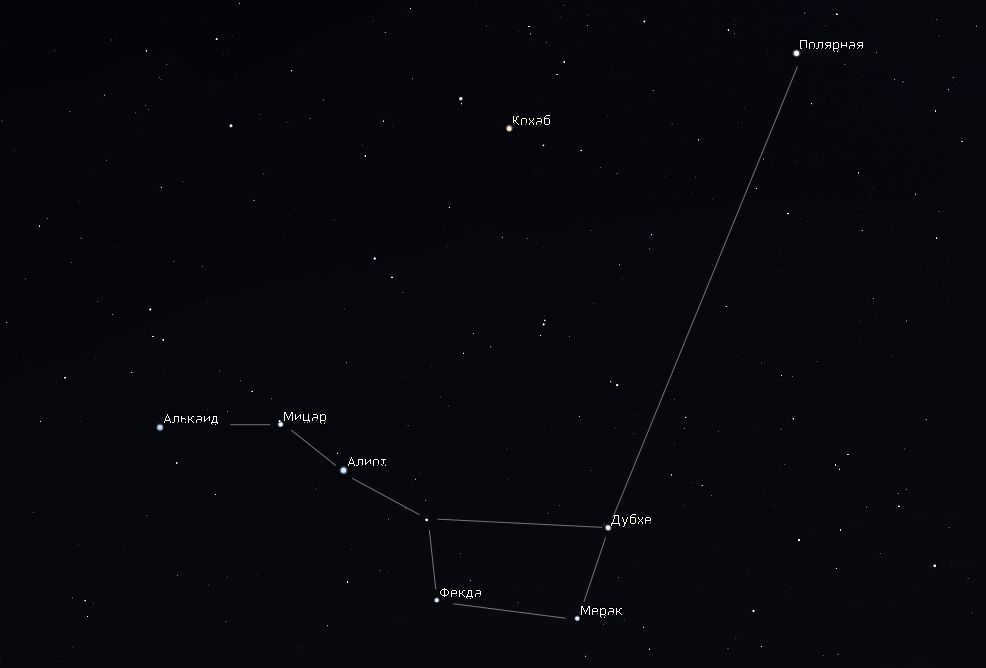
To locate Polaris, extend the line connecting the stars Merak and Dubhe beyond the star Dubhe by five times the distance. By doing this, you will be able to pinpoint the exact location of Polaris. This method is illustrated in the figure provided by Stellarium.
If you perform this operation during the fall season, the line will extend upwards. However, if you do it in the second half of spring when the dipper is at its highest point in the sky (zenith), the line will extend downwards towards the horizon.
By extending the line to five times the distance between Merak and Dubhe, you will come across a star that shines with a brilliance comparable to that of these two stars. That star is none other than Polaris.
What Makes Polaris So Well-Known?
Someone may ask: “Is Polaris the star everyone talks about? Why is it so famous?”
Contrary to popular belief, Polaris is not the brightest star in the night sky. It actually ranks 50th among the brightest stars. Visually, Polaris shines about as brightly as the stars in the Big Dipper. This means that in heavily lit cities like Moscow or St. Petersburg, Polaris often doesn’t stand out. The bright city lights cause the sky to be illuminated, making Polaris less visible.
So why has Polaris gained such popularity?
It is because of the unique position of Polaris in the sky – it is located near the north celestial pole or, as astronomers say, near the pole of the world. All the stars rotate around this pole, thus reflecting the Earth’s rotation on its axis and the Earth’s slower motion around the Sun. You don’t need to go far for examples: we have just witnessed it with the Big Dipper, which can be observed in different parts of the sky during different times of the year. However, Polaris remains in the same place – at any given time of the year and any given time of day!

This photograph was captured using a still camera and a long exposure, resulting in the stars appearing as arched trails in the sky. It is evident that all the stars in the image appear to rotate around a specific point in the sky known as the world pole. Polaris, the star depicted in the photo, is located closer to the world pole compared to the other stars, which is why its trail appears shorter. The credit for this image goes to Alan Dyer.
Another important aspect to note is that if a vertical line is drawn from Polaris to the horizon, it will indicate the direction of north. Additionally, the angle between Polaris and the horizon corresponds to the latitude of the observer’s location.
Due to these distinctive characteristics, Polaris has played a crucial role in celestial and terrestrial navigation for several centuries.
The North Star won’t always be the North Star
However, this hasn’t always been the case. In ancient Greek times, another star played the role of the North Star. In the future, the North Star will also no longer hold this position. But why is that?
It’s because the celestial pole is not stationary. It slowly moves across the constellations. You may have already deduced that our North Pole is simply a projection of the Earth’s North Pole onto the starry sky. In addition to its daily rotation, the Earth also undergoes a slow wobbling motion, like a spinning top, creating a wide cone. As a result, the North Pole traces an impressive circle in the sky with a diameter of about 60 degrees. This process takes a significant amount of time – as long as 26,000 years! Therefore, we don’t observe the movement of the North Pole during our lifetimes.
Due to precession, Polaris became the closest star to the world’s north pole only 1500 years ago. Prior to that, the star Cohab, the second brightest star in the Little Dipper, held that position. In another 2000 years, the world’s pole will approach the gamma star Cepheus, and in 12 thousand years, Vega will take on the role of Polaris in our sky.

For a long time, humans have been studying the universe, yet our knowledge about it remains limited. Polaris, also known as the North Star, is widely recognized as the most famous celestial body. It serves as a guiding light, helping people find their way without getting lost. Let’s delve deeper into how this works.
The Significance of Polaris
Polaris, also referred to as the North Star, is a well-known and easily identifiable star in the night sky. It is situated within the constellation Ursa Minor and aligns almost perfectly with Earth’s axis of rotation.
One of the primary reasons why Polaris is so notable is its importance in navigation. Sailors and travelers rely on it to determine their direction towards the north and navigate their surroundings.
One of the reasons why Polaris is so special is because it is located almost exactly in the direction of the Earth’s North Pole. This means that its position in the sky remains constant and does not change as time passes. Apart from its importance in navigation, Polaris has also had a significant impact on the cultural traditions of various communities.
For instance, in many northern societies, Polaris is often linked to myths surrounding the creation of the world. These myths portray the star as the central axis around which the entire world revolves.
Aside from its scientific, navigational, and cultural significance, Polaris stands out as one of the most prominent stars in the celestial sphere. While its brightness may pale in comparison to certain other stars, its strategic placement in the sky gives it an alluring radiance. Overall, Polaris holds great importance as a subject of scrutiny and examination for astronomers, astrophysicists, cultural anthropologists, historians, and experts in an array of other disciplines.
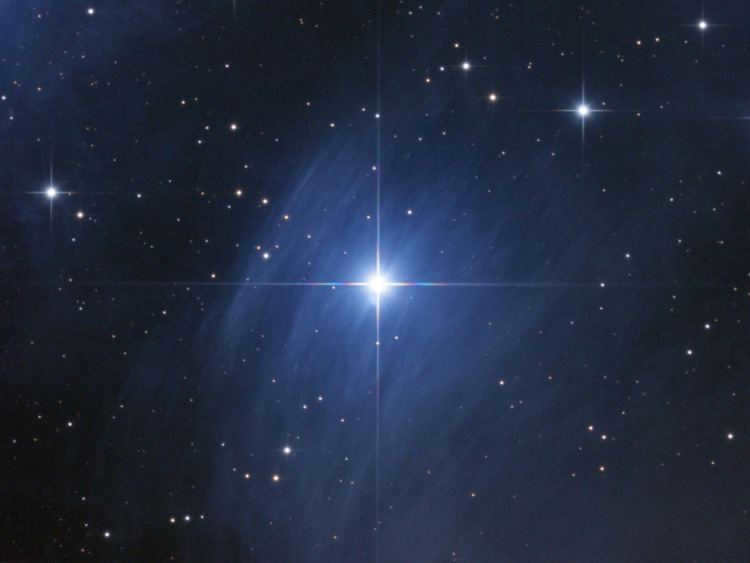

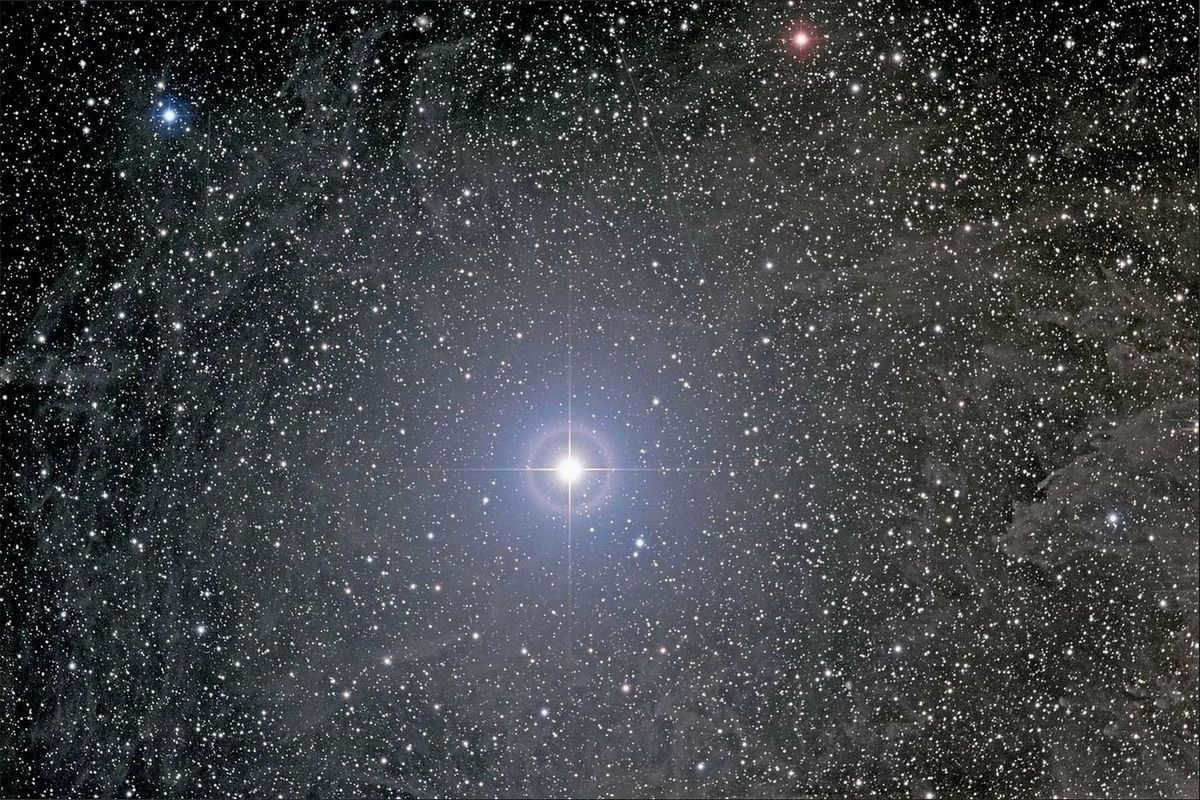
Determining Directions Using the Polaris Star
- Locate the Polaris star in the night sky. To make it easier, you can use the Big Dipper as a guide. It is a bright star that is almost aligned with the Earth’s rotational axis.
- Proceed towards Polaris. To do this, you need to face the star and walk in its direction. When you are facing Polaris, you will see north in front of you, south behind you, east to your right, and west to your left. This will help you easily navigate your surroundings.
- The polar star will guide you in the vast expanse easily and inexpensively. Therefore, you can effectively utilize the Polaris landmark without the need for any extra tools, like a compass.
The polar star will guide you in the vast expanse easily and inexpensively. Therefore, you can effectively utilize the Polaris landmark without the need for any extra tools, like a compass.
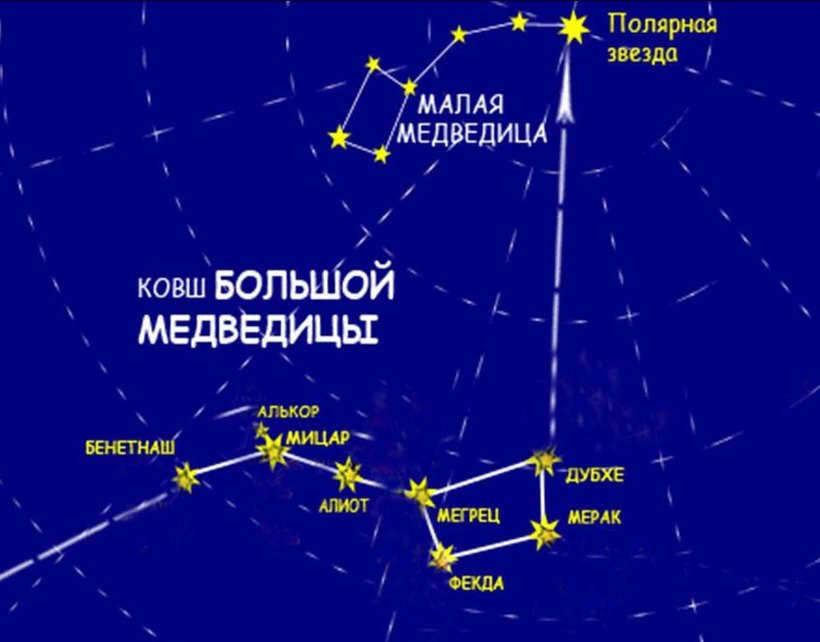
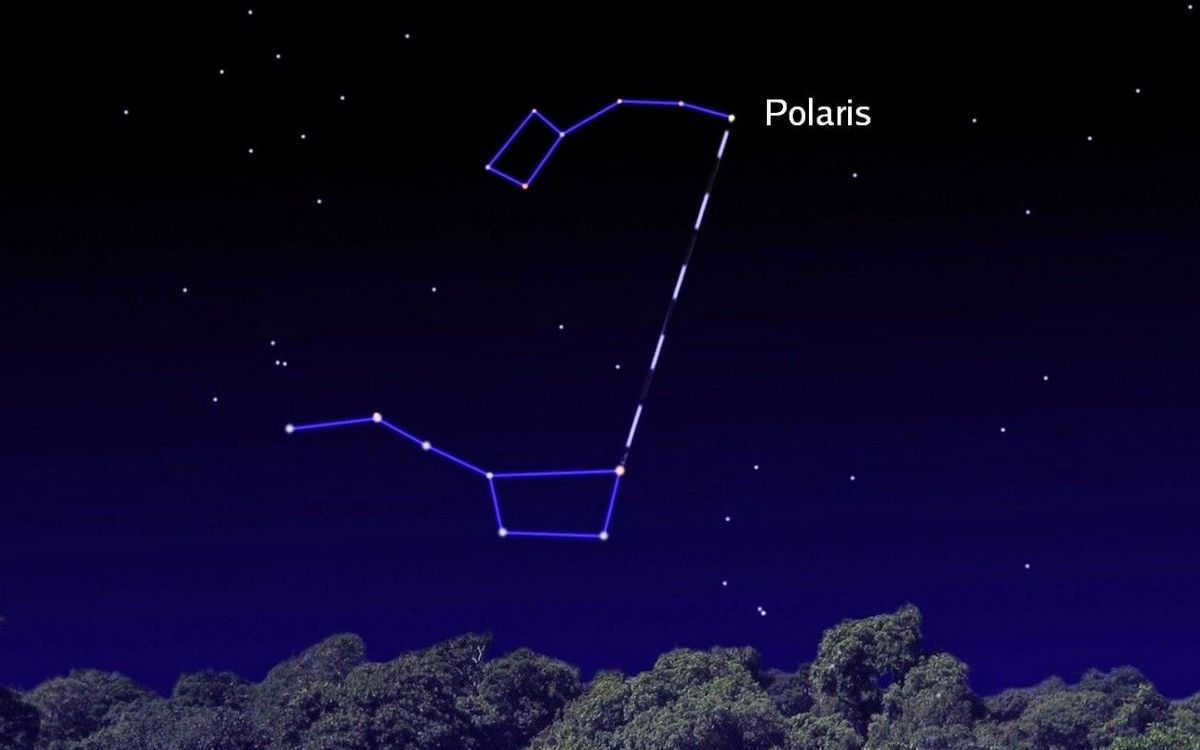
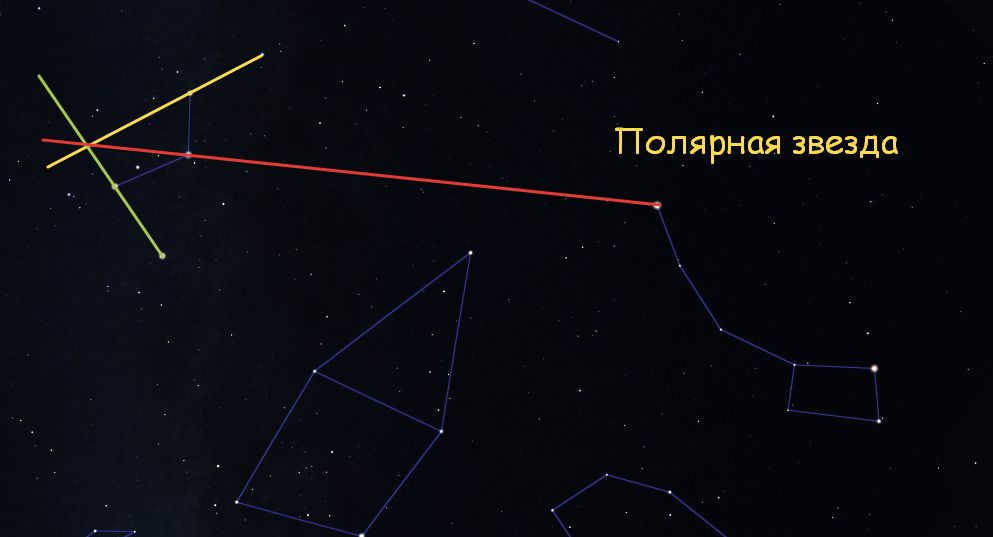
Discovering the Polar Star – 5 Helpful Techniques
Locating the polar star in the celestial sphere can be achieved through various methods. It is essential for navigation purposes. Simply standing towards the star is sufficient. Let us now explore the ways to locate this celestial body in the vast expanse of the sky:
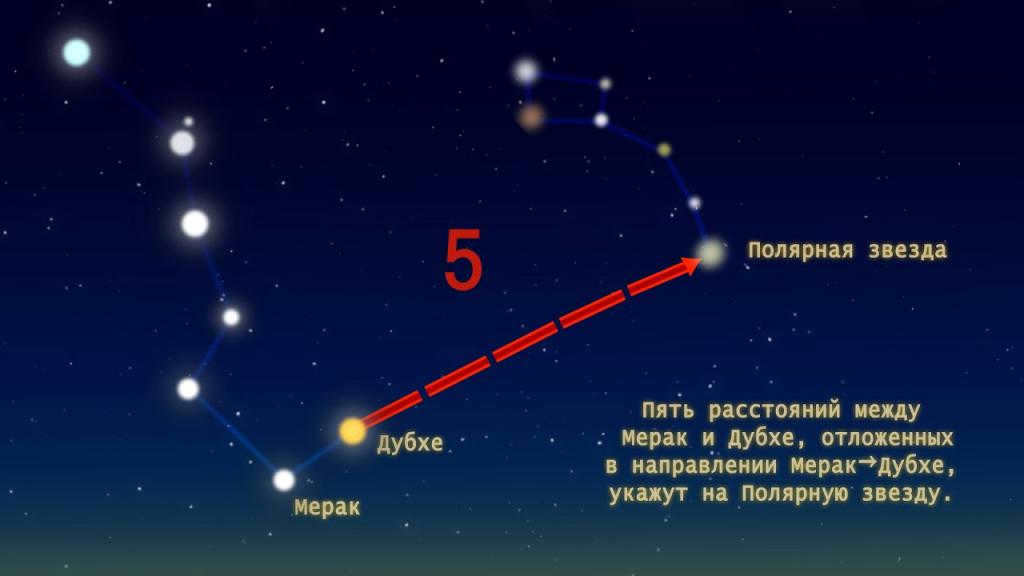
To locate Polaris in the Big Dipper, you can extend a line through the two outer stars in the “tail” of the prominent “bowl” of the Dipper. By extending this line about five times the distance between these stars, you will find Polaris. There are no other bright stars between this distance and Polaris, making it easily distinguishable by its brightness and its position in the celestial sphere.
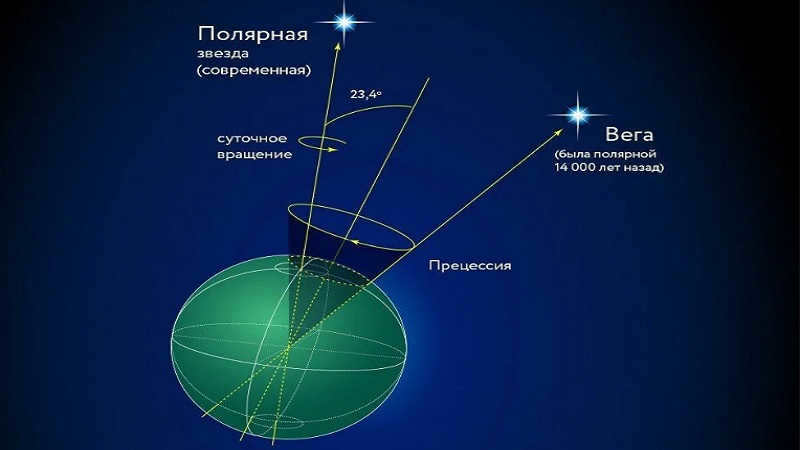
Using a compass to locate Polaris involves setting the compass on a level surface and determining the magnetic azimuth. Next, locate the north indicator on the compass and align it with the north pole. Then, measure the angle between the compass needle and the horizontal line drawn from the compass center to Polaris. As you approach Polaris, the angle between the compass needle and the line to the star will decrease.
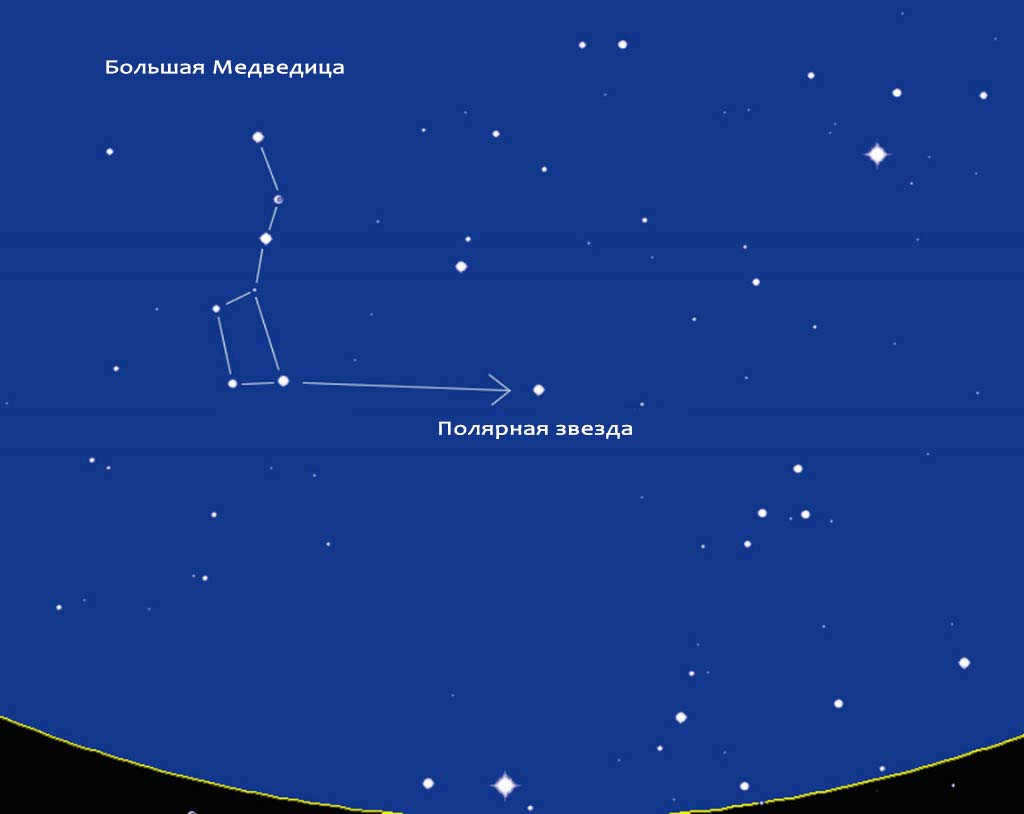
To utilize a map, you will require a conventional one. A regular layout of the vicinity or metropolis where you presently find yourself would be beneficial. It is imperative to align it precisely with the topography. The features depicted on the map should correspond with actuality. Presently, the upper portion of the map will indicate the direction of Polaris.
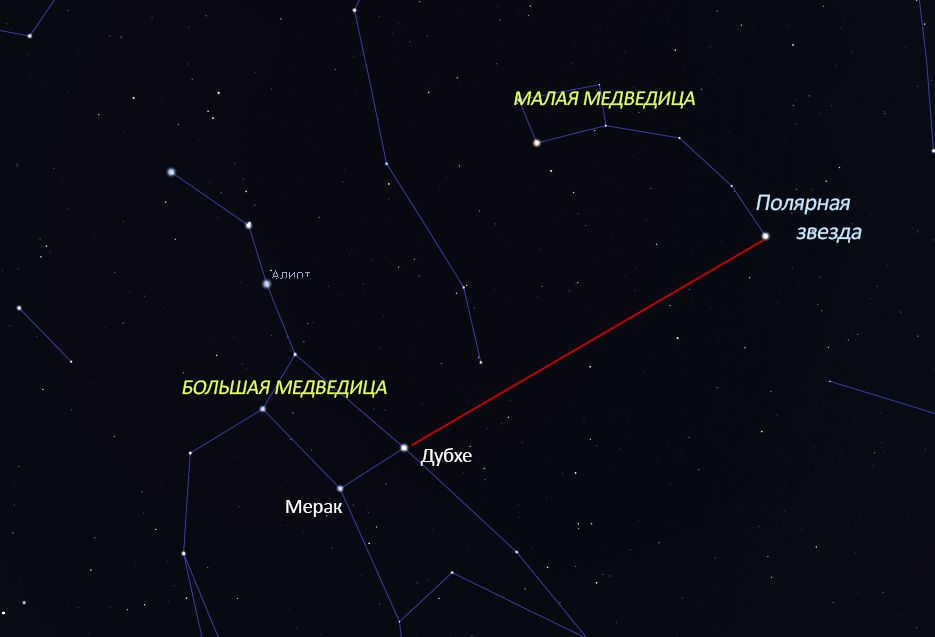
If you want to locate Polaris using the constellation Cassiopeia, the first step is to spot this constellation in the night sky. Once you have located it, turn your gaze towards the northern part of the sky and identify a cluster of stars known as the “Medusa”. After finding the Bear, simply trace its “snout” (also known as its paw) towards the celestial pole. The distance from the paw to the bright star at the top, known as Polaris or the North Star, is about five times the length.
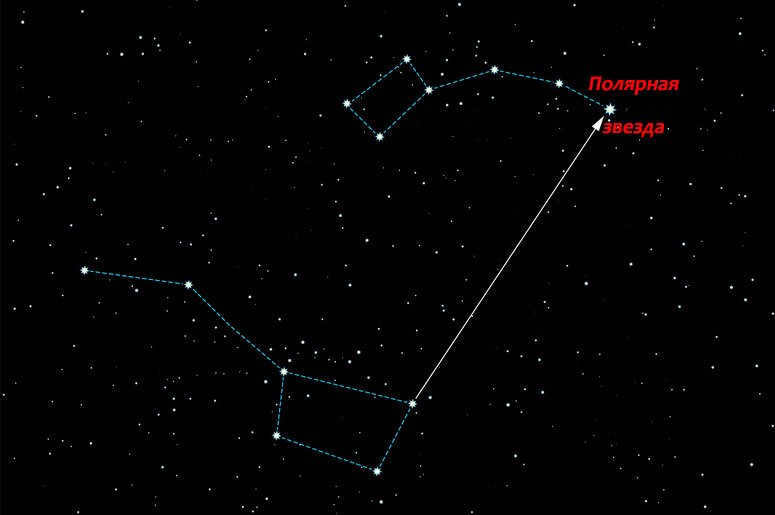
To locate Polaris using the Swan constellation, you first need to locate this constellation in the night sky. Next, locate the brightest star in the Swan constellation, which is known as Deneb. Once you have located Deneb, aim towards it and move in the opposite direction of the Swan’s wing. After traveling a distance approximately five times the length of the wing, you should be able to spot Polaris.
Debunking Myths about Polaris
In order to locate Polaris in the night sky, it is important to have a clear understanding of its characteristics. Over time, several misconceptions about this celestial object have emerged:
- The Brightest Star in the Sky: It is commonly believed that Polaris is the brightest star in the sky. However, this is a misconception. In terms of luminosity, Polaris doesn’t even make it into the top ten. It is actually ranked 48th among stars in the Northern Hemisphere.
- Always Overhead: Some people believe that Polaris is always directly overhead. This is not true. Polaris is only directly overhead at the North Pole.
- Amateurs frequently inquire about the whereabouts of Polaris in the sky. This celestial body holds great significance for beginners in the field of astrology, as it serves as a fundamental reference point in the exploration of the heavens.
- Residents of the northern hemisphere have the advantage of easily locating the north by simply identifying the position of Polaris. Unlike automated systems, this luminary consistently remains in one place, providing a more reliable indication of northward direction. Astronomers rely on this characteristic to determine geographical coordinates.
Star properties and myths surrounding it
Prior to commencing a quest, it is advisable to take into account the features of the star. This method will assist with search operations and prevent common errors. Within the community, there are various rumors circulating about the famous celestial object. Consequently, individuals tend to misinterpret certain assertions:
- The iconic celestial object is situated precisely at the cosmic zenith, a widely held misconception. Were this the case, the star would be unable to indicate the northern direction, as it would be positioned at the center point. However, it is named the North Star because it is positioned distinctly above the Earth’s North Pole within the vast expanse of the cosmic universe. Consequently, only those in the Northern Hemisphere can observe this brilliant celestial body at the center point. If the star were located further away from the pole point, it would descend more rapidly in the sky, eventually disappearing at the equator. As a result, the North Star cannot guide travelers in the southern direction; in this scenario, the Southern Cross fulfills that role. Furthermore, this landmark truly enables one to determine their precise northern location, surpassing the capabilities of a navigator or compass. These devices indicate incorrect pole points that differ from the geographical ones.
- It is widely believed to be the most brilliant star in the sky. However, this statement is misleading and can lead one astray. The Northern Lights do not actually emit a significant amount of light. In fact, they do not even rank in the top 10 brightest stars, instead coming in at forty-eighth place. Despite this fact, locating the Northern Lights is not difficult. While it may be easier to find stars like Vega or Sirius based on their brightness, these stars are not the object of our search. The Earth’s axis is constantly shifting, particularly in space, completing a full rotation every twenty-six thousand years. As a result, the Northern Lights have not always served as a reliable point of reference, and they will not continue to do so for much longer. In approximately thirteen thousand years, Vega will take the place of the Northern Lights and guide future generations on Earth.
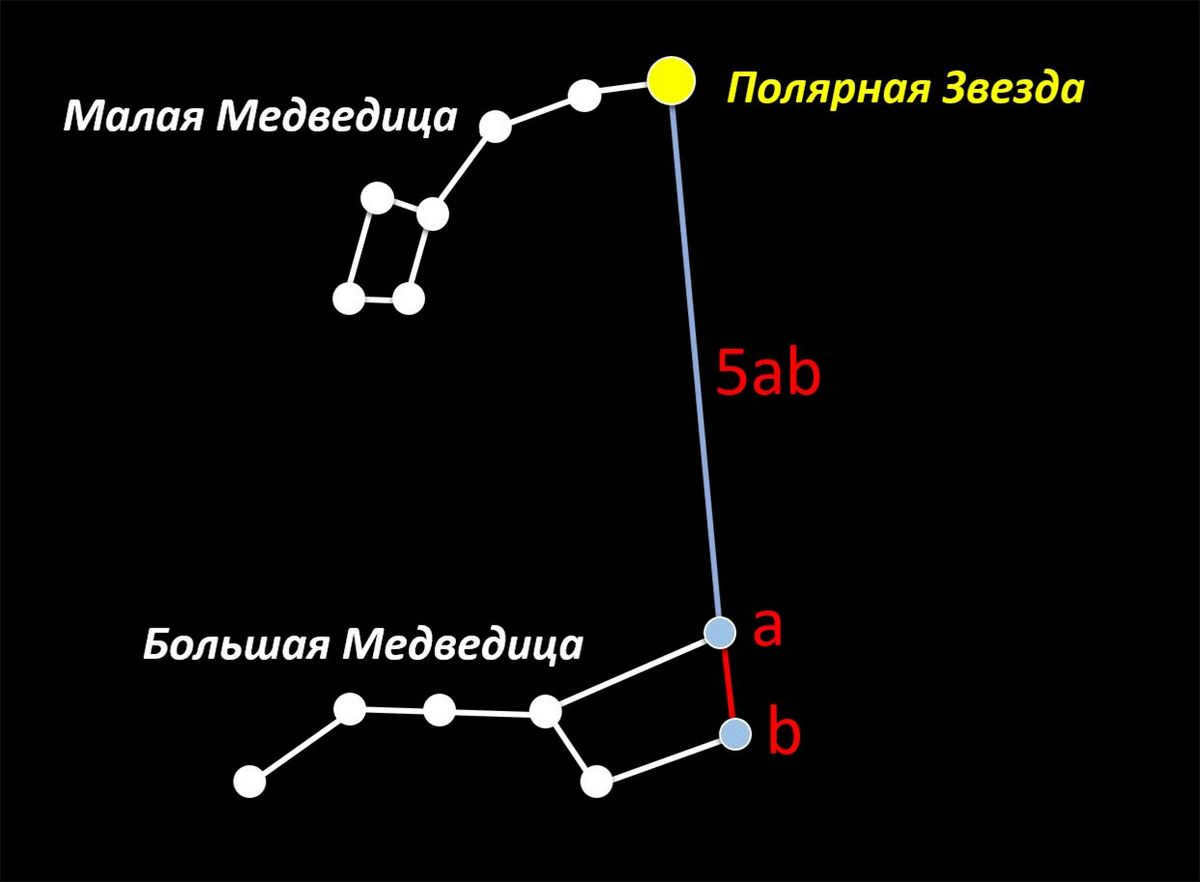
Ways to locate the North Star in the night sky
There are several methods to locate the North Star in the night sky, but two primary approaches stand out. The first method involves identifying constellations, while the second method relies on using different tools for searching. Additionally, a compass or an atlas can aid in the search process.
Finding a specific star using constellations
When the sky is clear and you have a clear view of the brightest stars, it becomes easier to locate a specific star by identifying the constellations. This technique is effective because the stars in a constellation maintain their relative positions and do not move in relation to each other. This allows for a more precise search. In the case of finding a polar landmark, it can be located at the end of the “tail” of the Little Bear constellation and is distinguished by its brightness in this area.
Bears and Polaris
If you want to locate Polaris in the night sky, the first step is to locate the constellation known as the Big Dipper. More specifically, you need to locate its handle, which is the widest part of the constellation, opposite to the “bowl” formed by two stars – Merak at the bottom and Dubhe at the top.
Visualize the Big Dipper as a celestial bucket, with the handle on the left side and the wide bowl on the right side. Locate the two aforementioned stars and draw an imaginary line parallel to the handle between them. At a point five times the length of the handle away from Merak and Dubhe, you will be able to see the handle of the Little Dipper. It stands out due to its intense brightness, making it hard to miss.
The technique of constellation-based searching primarily focuses on their individual parts. Endlessly circling bears in the starry sky can cause the Big Dipper to appear in different positions, such as standing on its side.
To easily create a straight line, a measuring tool, a finger, or a rod can be used. This will help determine the location of the North Star in the sky.
Because the Big Dipper is a large constellation, it can shift or become hidden behind tall buildings or clouds. In such cases, the star can be located using the constellation Cassiopeia. This constellation can resemble the letters M or W with elongated ends.
In this scenario, the middle arrow points to the Little Dipper, where the North Star is situated. This method can be confirmed by locating the Big Dipper or Cepheus, a constellation that resembles a house with a roof.
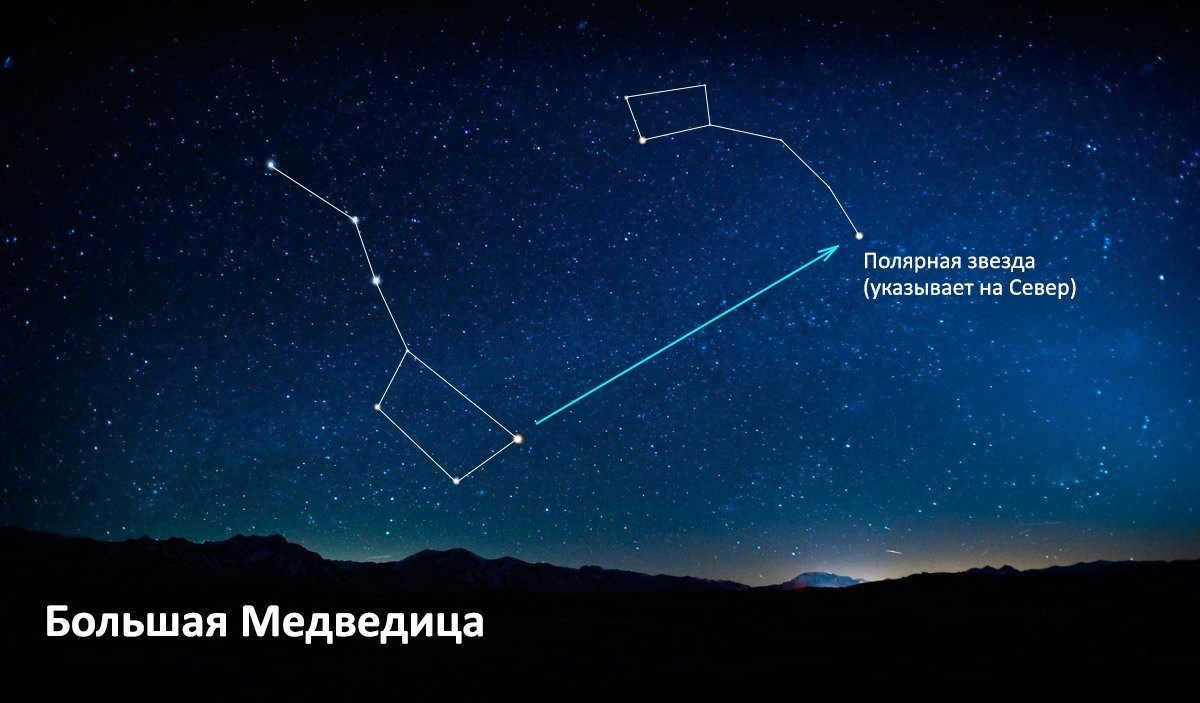
Utilizing Technological Devices
In certain situations, it may be extremely challenging to locate a celestial object on your own. This could be due to thick clouds or obstructing trees that hinder your view of the sky. That’s why various technological devices are available to assist in finding the northern landmark.
One example is if you have a camera with you, your search for the celestial object will be greatly simplified. Photographs of outer space are typically taken with a significant time delay, which causes luminaries to leave light trails. The longer the trail, the farther the star has traveled.
Because the polar landmark is situated along the axis of space and experiences minimal movement, it is quite easy to locate it in a photograph. The light trails form circular patterns around the shortest and faintest trace of the polar landmark in the image.
First and foremost, in order to search for the polar luminary using a camera, it is essential to make the correct adjustments. The ISO limits for light sensitivity should range from four hundred to six hundred. Additionally, the aperture should be opened and set to infinity. Failure to adjust all the parameters and make the necessary adaptations as a whole will result in overexposed photos. It is recommended to set the exposure time interval to a maximum of thirty minutes, which will allow for the capture of light streaks.
It is important to ensure that the camera is securely fixed. It is worth noting that not all customizable functions have been mentioned above, so it may still be necessary to make further adjustments.
If you do not have the necessary equipment for photography, there are mobile applications available that are specifically designed for capturing celestial phenomena. However, it should be noted that not every camera is capable of capturing such landmarks.
Utilizing a Map or Compass
Because the presence of city lights can obstruct the view of the sky, it is possible to utilize an atlas or compass in order to locate the North Star. However, it is important to keep in mind that the compass indicates the magnetic poles, which differ from the geographic poles. As a result, additional calculations will be necessary. To determine the position of the celestial body on the compass, the following steps should be taken:
- Identify the north direction, taking into account the adjustment for the magnetic poles.
- It is crucial to ascertain the latitude that corresponds to the elevation of the polar landmark.
Measurements should be conducted away from power lines and other objects that may introduce inaccuracies.
What other information should you know about Polaris
We have already discussed the methods of locating Polaris, but now let’s delve into what it is and some interesting facts about it. In reality, Polaris is an unexplored and fascinating celestial body.
Polaris is located approximately five hundred light years away. The light emitted by this star began its journey in the early 16th century, during a tumultuous period on Earth.
Polaris is actually a triple system. Its primary component is a supergiant star, which is two thousand times brighter than the Sun, seven times more massive, and fifty times larger. This star, also known as “Polar A,” is estimated to be around sixty million years old.
There is another celestial body, known as Polar ab, located eighteen and a half astronomical units away from the giant. It is only two times more massive than the Sun and completes one revolution around it every thirty years. Despite this, the Hubble telescope managed to capture an image of this star pair.
Polaris B, which is one and a half times heavier than the Sun, can be found at a distance of two thousand four hundred astronomical units from Polaris. It has an orbital period of one hundred thousand years and is observable through any astronomer’s telescope.
The primary component of the Polar star, a supergiant, is classified as a variable star. Similar to cepheids, these stars are known for their pulsations. They exhibit a peculiar behavior where their pulsations initially diminish and then resume. This means that they alternate between getting brighter and fainter over the course of several decades. The Polar star is the closest cepheid to Earth.

